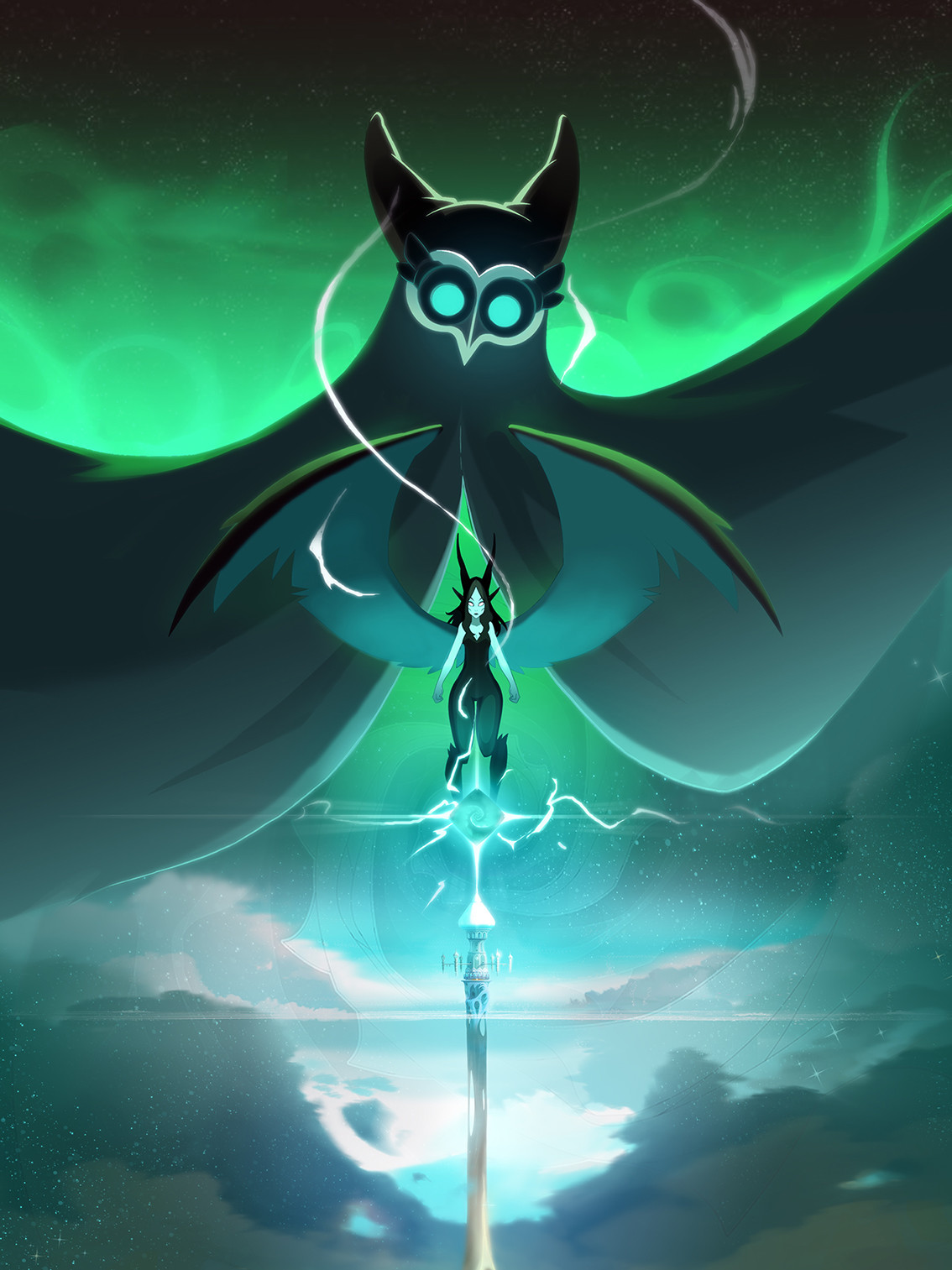
About the project...
I've been a fan of wakfu ever since it's first episode and closed beta. Even today I keep on playing from time to time and I'm always on the lookout for new Ankama creations as I've fallen in love with their universe.
I've started playing D&D in 2016-17 and I've decided to try and homebrew most of the now 18 classes of wakfu for D&D 5th edition. I focused on the key parts of each of the classes' gameplay and feel by referring to the wakfu animation but especially the wakfu game, and adapt that unique gameplay to D&D.
This document is a non-extensive Wakfu compendium that aims to serve as a guideline for Dungeon Masters and players to help them play D&D in a homebrewed Wakfu setting. In other words, this document assumes that you are using the D&D 5th editions rules in order to play. There will be many references to official D&D content in the following pages. If this content cannot be found in the Player's Handbook for 5th Edition D&D, the official D&D sourcebook in which the content may be found will be referred to using the following abbreviations.
| Abreviations | D&D Sourcebook |
|---|---|
| SCAG | Sword Coast Adventurer's Guide |
| XGtE | Xanathar's Guide to Everything |
| MToF | Mordenkainen's Tome of Foes |
| EEPC | Elemental Evil's Player Companion |
| DMG | Dungeon Master's Guide |
| WGtE | Wayfinder's Guide to Eberron |
| VGtM | Volo's Guide to Monsters |
| CR | Critical Role Content |
| ERftLW | Eberron Rising from the Last War |
Some of the material in this document was homebrewed. Such material will be refered with a * to indicate that it can be found further down in this document. The above abbreviations will be used only if the referenced content isn't available in the D&D 5th edition Player's Handbook.
You may notice that homebrew content still doesn't explicitly refer to it's place in the world of Wakfu; the homebrews were initially made to be adaptable to a D&D setting. To find their place in the Wakfu world, simply look at the Races section of this document, which details the races of the Krozmoz. Races are as defining in a Wakfu setting as classes are in a D&D world, if not more. Therefore, the description of your race will most likely define what classes and subclasses are available to you. Keep in mind these are simple guidelines, which can be used in any way you see fit for your game.
In the credits, you will find the links to the latest reddit threads containing feedback on the various homebrewed subclasses and items. Commenting on these threads or sending a direct message to their author is a good way to communicate any suggestion, opinion and feedback on the homebrewed material or any questions about the creation process of said materials.
Special Thanks
During the last year and a half, I've worked on quite items and subclasses, but I didn't do them all on my own. Along the way, some folks gave me great feedbacks, ideas, opinions, suggestions and even playtested some of my work! I couldn't have completed this compendium without their help. Also, my apologies; there may be names missing...
Special thanks to :
u/Whitesalt,
u/Koolnu,
u/Impishwolf,
u/Necro_Wabbit,
u/SamuraiHealer,
u/DMvim,
u/PeanutJayGee,
u/Littleax1,
u/LicensedMagician,
u/Krolisian,
u/suicidesingle,
u/acapellarhyme,
u/Phylea,
u\Superguy2876,
u/Drewfro666,
u/Teradul,
u/Hathorym,
u/Eiswraith,
u/CootsysLiferaft and XionDucki !
and all the good folks over in the Discord of Many Things for all the help and feedback. I learned alot thanks to you all!
By u/Kokolokoli
Contents

Cover Art by Fabrice Nzinzi
Oropo and Lady Echo sitting atop his tower of dreams, harnessing the power of the Eliacube for their grand purpose which could bring an end to the Era of Wakfu...
-
Part II : Class Archetypes
-
11Primal Paths
-
11Path of the Tattoed Blood
-
13Divine Domains
-
13Ward Domain
-
14Druidic Circles
-
14Circle of the Roots
-
18Martial Archetypes
-
18The Gamester
-
19Monastic Traditions
-
19Way of the Swaying Paw
-
20Way of the Relic Guardian
-
23Roguish Archetypes
-
23Shadowmeister
-
24Sorcerous Origins
-
24Time Sorcery
-
25Otherworldly Patrons
-
25The Astral Dragon
-
26Arcane Traditions
-
26Prismic Magic
-
Part III : Creatures & Magic Items
-
28Monstruous Families
-
28Drhellers
-
30Magic Items
-
30Bow of Eladrin Archery
-
30Guardian Leaf
-
30Floating Shields
-
31Astral Dragon's Planar Beacon
-
31Barrel of Everthirst
-
Part IV : Credits
-
33Art Credit
-
33Reddit Posts
PART I
World Overview

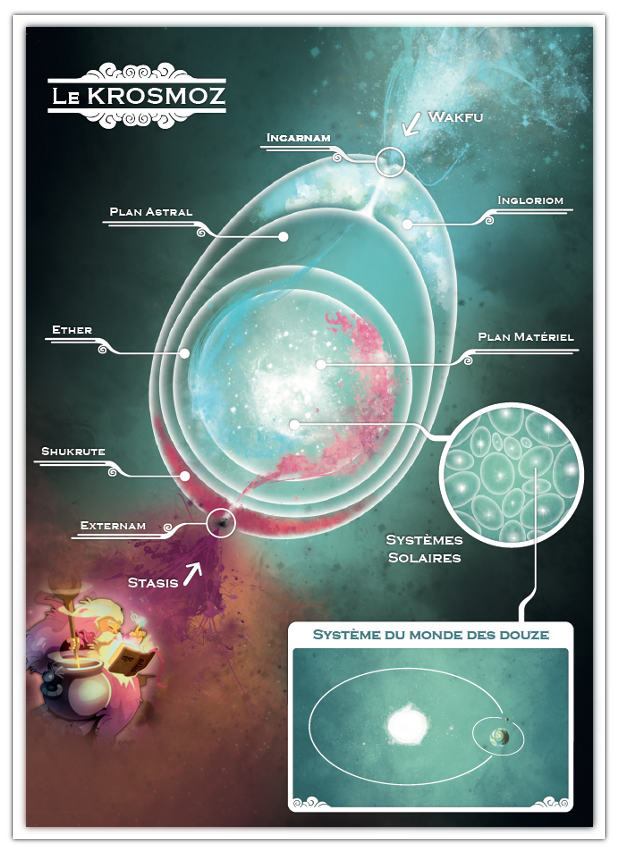
The World of Twelve
Magic
Magic in this universe is made by harnessing an energy known as Wakfu (the life granting energy) and it's opposite, Stasis (energy of destruction). They both flow constantly in this pocket universe; their harmony takes the form of a cycle.
ShuShus
The Shushu are the demons and devils of the world of Wakfu. They coexist in the Shushu dimension, also known as Shukrute, and are ruled by Rushu. Although there are ranks in their society, many are tremendously chaotic (especially the weaker ones), and all revel in evil and destruction.
Shushu Guardians
During the Dofus Age, some of them infiltrated the material plane and were sealed into sentient objects or weapons. Owners of such objects became known as Shushu Guardians. They form an unofficial order that aims to find shushus and guard them. In the process, they often use their powers, making their life a struggle to bend the demon to the bearer's will so it can tap into it's power.
To make such objects, you can refer to the Devil and Demon pacts of MToF. Note that through a ShuShu guardian's career, the guardian will develope a relationship with the sealed demon, which can affect the pacts' effects. Expect The guardian to unlocks new powers or be taken over by them with time.
Huppermage Order
The wizards of this world are known as huppermages. A single academy subsides; many come to be formed, but few succeed at becoming huppermages. Innate wizards are extremely rare as the means and resources required to study magic in that way are exclusive property of the huppermage order. It has great political influence but isn't particularly affiliated to any nation. It is very reclusive and secretive in it's ways, but prizes balance above all.
Dragons
Very few dragons exist in the Krozmoz; all of which can be heard of in legends as old as the world of twelve itself. They can be separated in 2 families, and unlike the dragons of the D&D universe, they share an intimate bond with each other.
Habitants of the world see them as quasi-divine legendary beings; tales of their deeds and myths of their importance are not unheard of. However, they have no followers and traces of them barely ever appeared before the eyes of the world's inhabitants.
The Dofus
Instead of dying, dragons reincarnate in the egg they were born from centuries after their death; for this reason, they very carefully hide their eggs to make sure no adventurer comes across or damages them. These eggs are called Dofus.
They are nearly indestructible, and hold such power that if a creature could gather them all, it could destroy or otherwise shape the world as it sees fit. Expending the energy of a Dofus in this way may delay the dragon's reincarnation or can damage it in the event that the power is extracted too violently.
The Dofus Age
The Dofus age is the first era of the world of twelve. The world was filled with dangerous magical creatures, and the 4 great nations were built at the beggining of this age : Amakna, Bonta, Brakmar and Sufokia. Adventurers, although they were few and and their identity forgotten, lived glorious tales and their deeds weren't forgotten for centuries, some of which involved the six primordial dofus. They were discovered, protected and exploited by various individuals, leaving their mark across the world and it's history.
The gods were very involved with the commonfolk at the time. Demi-gods and divine creations alike appeared during this age, either by accident or with a precise objective given by their creators; some inhabitante=s even became gods during those times. The dark influence of the Shushus was also very potent. Demons of the Shukrute were often sent by the newly banished Rushu to tear the world down.
Ogrest
Throughout the Dofus age, many witnessed the powers of the dofus. However, none had been able to gather them all and wield their power like Ogrest. The first and last creature to gather all of the primordial Dofus, Ogrest climbed upon the unfathomably high and isolated Mont Zinit to mourn the loss of a loved one, or so the stories say.
Few habitants know about it's motives and what led it down the path of the search for the primordial Dofus; but once Ogrest succeeded, the power of the Dofus spilled forth, guided by the sheer intensity of of it's pain, sadness and anger. Tempests scoured the world, raising the sea level above what were once great mountain valleys, cities and kingdoms. The four nations managed to survive, but at a great cost. From that moment, none could deny the existance of the Dofus and their greatness, for the very world was reshaped by Ogrest's wrath. This event was titled "Ogrest's Chaos", and it marked the beggining of the Era of Wakfu.
The Era of Wakfu
Now with erratic temperatures, sparse and momentary resurgences of ancient magical creatures, isolated and nearly powerless kingdoms, the loss of centuries' worth of civilization advancement, as well as a very clear path to glory, adventurers are pouring out of the nations that in their turn supported their endeavors. Everyone hoped that a brave band could, someday, put an end to Ogrest's world shattering cries as it sat atop it's mountain.
Not all of the adventurers aspired to such great deeds, but the counting of stories past as well as the wonder that isolation brought to the people pushed many to go explore the various lands, islands and oceans to unearth the treasures of the times forgotten or lost to Ogrest's Chaos.
Races
The races of the world of twelve are consolidated into cities and villages. Each and every one of them has a very strong culture and religious belief that drive the evolution of it's people. These customs have such an important significance that it even drive the profession they are most likely better at, as well as their skills and ways of combat. That is why, in the Wakfu universe, races are the same as classes. However, it is not the case in the D&D system.
in this section, you will find a brief overview of each of Wakfu's races and how to build them using race, class and subclass combinations of the D&D 5e system, as well as in what D&D sourcebook you may find them. The subclasses that were homebrewed in order to adequatly adapt the Wakfu archetypes to D&D are described later in this document, in the Subclasses section.
Keep in mind that in D&D as well as in the Wakfu universe, players are only limited by their own imagination; with the support of a DM, any tweaks can be made, weather they be for flavor and style or actual mechanical effectiveness.
Feel free to switch these combinations up if you want a character that stands out a bit more even amongst it's own folk, such as a particularly religious Iop or a Cra that never really enjoyed bows and arrows.
For an exclusive Wakfu Setting
If you intend to play in an exclusively Krozmoz based setting or are simply curious about the key characteristics of each race, you can also consult this document featuring fully the brewed races (by u/CootsysLiferaft and XionDucki).
Cra
The elves of the Krozmic universe, the Cra are known for their precision and accute senses. They have intertwinned their knack for archery with natural magics, making their Bow of Eladrin Archery* a great emblem to their people.
Alternate race : Elf, Half Elf, Human.
Suggested Class Archetypes : Fighter(Arcane ArcherXGtE), Ranger(Hunter, Horizon WalkerXGtE).
Ecaflip
These feline humanoids have built a solid reputation of being adept gamblers and risk takers. Some say they live for the thrill of risking it all.
Alternate race : Halfling, Human, TabaxiVGtM, ShifterWGtE/ERftLW.
Suggested Class Archetypes : Fighter(Gamester*), Sorcerer (Wild Magic).
Eliatropes
They are very few and little is known about them or their past; they are said to be the last of a very ancient alien civilization that vanished leaving little trace of it's passage.
Alternate race : Gnome, Human.
Suggested Class Archetypes : Warlock(The Astral Dragon*, The Great Old One).
Eniripisa
This people have an uncanny resemblance to pixies. With butterfly wings and flower wands, they are natural caretakers of any living being.
Alternate race : Human, ArackokraEEPC, AasimarVGtM.
Suggested Class Archetypes : Cleric(Life Domain , Grave Domain), Druid(Circle of DreamsXGtE), Artificer(Alchemist)ERftLW.
Enutrof
The dwarves of the Wakfu world, these folk are known for their love of riches and boundless avarice. They have tamed Drhellers* for centuries and now seem to have a symbiotic relationship with these beasts. Their heroes have been known to fight with nothing else than digging tools, which has lead to the design of their signature weapon, the Battle Shovel*. Varying in size, the trend is to enhance them with a returning enchantment as the weight of this weaponized shovel make its throwability useful yet limited.
Alternate race : Dwarf, Human.
Suggested Class Archetypes : Ranger(Beastmaster), Bard (College of Lore).
Feca
Feca adore having something to protect. When they do, they make it their life's work. This drives most of them to become land owners, farmers or village leaders. Over the years, they have developped a particular talent for abjuration, and few can be found without a trusty shield. those less talented with magic are quite capable of defending with agricultural tools, such as the War Scythe*.
Alternate race : Human.
Suggested Class Archetypes : Cleric(Ward Domain*), Wizard(Abjuration, Evocation).
Iop
Simple folk, Iops live for the thrill of battle and glory. Their people barely value any other form of skill and knowledge.
Alternate race : Half Orc, OrcVGtM, GoliathEEPC.
Suggested Class Archetypes : Fighter(SamuraiXGtE, Battlemaster, Champion, CavalierXGtE), Paladin(Oath of Devotion, Oath of the CrownSCAG), Clerc(War Domain).
Osamodas
Osamodas and beasts are so friendly that it can be quite unsettling. They have a very particular attachment to beasts and share some of their traits. Legends say they have beast's and draconic blood, which grants them their bestial abilities and looks.
Alternate race : Dragonborn, Tiefling, ShifterWGtE/ERftLW.
Suggested Class Archetypes : Druid (Circle of the Moon, Circle of the Shepherd XGtE), Ranger (Beastmaster), Sorcerer (Draconic Bloodline).
Ouginak
Ouginak are canine beastfolk that kept alot of their bestial brethren's instincts. Survival, the pack, the chase and the hunt are important parts of who they are.
Alternate race : Human, Shifter(Wildhunt, Longtooth)WGtE/ERftLW.
Suggested Class Archetypes : Ranger(Hunter, Monster SlayerXGtE), Bloodhunter(Order of the Lycanthrope)CR.
Pandawa
Pandawa, also known as Pandafolk, are usually sedentary and isolated. They enjoy the little things in life and have a strong culture and tradition, filled with celebrations and alcoholic beverages. Unfortunately, these very traditions have granted them the reputation of uncivilized drunkards. They often fashion their Barrels of Everthirst* into portable flasks or bottles.
Alternate race : Human, Shifter(Beasthide)WGtE/ERftLW, TabaxiVGtM.
Suggested Class Archetypes : Monk(Way of the Open Hand, Way of the Swaying Paw*, Way of Way of the Drunken MasterXGtE).
Sacrieur
To the hardy Sacrieur people, pain and suffering are to be welcome and cherished. They beleive that only through physical hardship can one truly become strong and pure.
Alternate race : Half Orc, Human, GoliathEEPC, OrcVGtM.
Suggested Class Archetypes : Barbarian(Path of the Tattoed Blood*, Path of the Berserker, Path of the ZealotXGtE), Monk(Way of the Long DeathSCAG).
Sadida
Sadida are said to be born from the trees themselves. Their intimate relationship with plant life drives most of them to sustain, heal and protect it. Many of them carry a Guardian's Leaf* as a reminder of their duties
Alternate race : Elf, FirbolgVGtM, EladrinMToF.
Suggested Class Archetypes : Druid(Circle of the Land, Circle of the Roots*), Paladin(Oath of the Ancients), Cleric(Nature Domain).
Sram & Roublard
Vile tricksters, individualistic mongrels and merciless outlaws fill their ranks. Crime is but a way of life for most Roublards and Srams. Some commit acts more atrocious than others, but to them these are simple displays of power.
Alternate race : Human, Elf(Dark), ChangelingWGtE/ERftLW, GoblinVGtM.
Suggested Class Archetypes : Rogue(Shadowmeister*, Arcane Trickster), Monk(Way of Shadow), Bard(College of WhispersXGtE), Fighter(GunslingerCR), Ranger (Gloom StalkerXGtE).
Steamer
Teamers were the ones most affected by the Chaos. The member of their people are humanoid mechanical vestiges of this once great yet secretive nation. Some of them are more artificial than others.
Alternate race : Human, WarforgedWGtE/ERftLW,
Suggested Class Archetypes : Artificer (Artillerist, BattleSmith)ERftLW
Xelor
The Xelor folk are great arcane scholars that have a long history of mingling with time magic. Natural tinkers and great historians, they see time as an important resource to be managed and exploited.
Alternate race : Gnome, Human.
Suggested Class Archetypes : Sorcerer(Time Sorcery*).
Zobal
Very little is known of them. Apparently, there was and still is a Zobal village somewhere. The few who have heard of or witnessed these individuals often label them as deranged lunatics carrying all sorts of trinkets.
Alternate race : Half Elf, Human.
Suggested Class Archetypes : Monk(Way of the Relic Guardian*, Way of the Elements).
Additional Melee Weapons
| Category | Name | Cost | Damage | Weight | Properties |
|---|---|---|---|---|---|
| Simple | War Scythe | 2gp | 1d6 slashing | 2lbs | Reach, versatile(1d8) |
| Martial | Battle Shovel | 3gp | 1d8 bludgeoning | 3lbs | Versatile(2d4), Thrown(10/30) |
Pantheon
In the Era of Wakfu, the gods were no longer as involved the world's events. They still had followers, but their worship was less religious than it was traditional or inherently part of the inhabitants' culture. Every people changed to adapt to the drastic changes Ogrest's Chaos brought to the world, but all clinged to what they believed could be their only saviour; their faith. Rare are the individuals who deny the gods' existances.
The universe of wakfu is rich in myths and stories about the origins of the people, the gods and the universe itself.
As a DM, you may draw a connection between any one of these gods and those already present in the Forgotten Realms setting. You can use them however you see fit, weather it be taking inspiration from the Wakfu myths and substituting the Wakfu divinities with preexisting D&D divinities, adding the Wakfu pantheon to the list of gods in your game and creating new myths and legends, or expand the past of the Wakfu universe by adding D&D inspired gods and stories.
Note that in the Krozmoz, gods all have many facets and particular interests that make them rather complex characters. Each of them have their own code, which their followers tend to follow although they may have wildly different alignments than the god they worship.
Divine Figures of the Krozmoz
| Krozmoz Divinity | Alignment | Province |
|---|---|---|
| Cra, the Lady of the Bolt | LN | Keen Senses, Skill, Justice |
| Cornu Mollu, the Split Child | CN | Chaos, Destruction, Vengeance |
| Dralbour, the Big Boss | LE | Trickery, Corruption, Thievery |
| Ecaflip, the King of Fortune | CN | Luck, Change, Travel |
| Eniripisa, The Miracle Fairy | NG | Life, Generosity, Healing |
| Enutrof, the Golden Dragon | LN | Greed, Avarice, Trade |
| Feca, the Mistress of Shields | NG | Protection, Runes, Humility |
| Iop, the Great Battle Hero | LN | War, Glory, Pride |
| Pandawa, the Princess of Pints | CG | Pleasure, Joy, Gluttony |
| Sacrieur, the Mother of All Pain | CG | Suffering, Pain, Charity |
| Sadida, the Doll Master | N | Nature, Plant, Wilderness |
| Razad, the Lost Soul | LN | Madness, Mind, Temperance |
| Sram, the Hateful One | NE | Darkness, Trickery, Evil |
| Octapodas, the Godly Kraken | N | Ocean, Knowledge, Craft |
| Osamodas, the Celestial Tamer | N | Animals, Freedom, Creation |
| Ouginak, the Pitiless Bloodhound | CE | Savagery, Hunt, Lycanthropes |
| Xelor, the Keeper of Time | LN | Time, Knowledge, Balance |
PART II
Class Archetypes

Primal Paths
Path of the Tattooed Blood
Although rare and often secluded, some barbarian tribes thoroughly study their state of unbridled emotion and learn to manipulate it further, through the carving of ritualistic blood tattoos. These markings encompass the bearer's will, desires and wishes. The Path of the Tattooed Blood is a personal journey, as the barbarian explores it's inner being through the alteration of it's rage. In battle, pain fuels your rage and the blood markings guide it's primal energy through your body.
Bonus Proficiencies
At 3rd level when you adopt this path, you gain proficiency with the Herbalism kit, the Calligrapher's tools or the Painter's supplies, as well as with the Arcana or Nature skill.
Blood Tattoo
Starting when you adopt this path at 3rd level, you complete your first crest of power.
Choose one 3rd level crest of power; you gain it's feature. You can also decide it's size, shape and position on your body. You gain an additional crest of power at levels 6 and 10 of levels 6 and 10 respectively.
Whenever you finish a long rest, you can choose one of the crests you are wearing and replace it with another of the same level. Tracing a new power crest consumes the required material components as you mix the crushed ingredients with your blood as ink.
Sense life
At 6th level, as an action, you can sense the presence of living creatures within 30 feet of you that have a Constitution score of 6 or higher. Until the start of your next turn, you know the distance and direction to each creature, as well as each creature's Constitution score, size and type. Constructs and Undead can't be perceived in this manner.
Blood Surge
Starting at 10th level, although it is a painful process, you can manipulate your rage with your life's force momentarily.
While raging, whenever you activate your 10th level power crest, you can use this feature by spending a number of hit points equals to twice your barbarian level to activate an additional 10th level power crest you choose as part of the same action. You can choose to extend either of their effects on your next turn.
Once you use this feature, you can't use it again until you finish a long rest.
Death's Vengeance
Starting at 14th level, your mark takes over your body when you fall unconscious and your body momentarily overcomes death.
At the start of your turn, if you have 0 hit points and aren't dead, you can use this feature by choosing to automatically fail this turn's death saving throw. Your rage lifts you back on your feet and takes over your being.
Until the end of your turn, you are immune to all conditions and magical effects, your movement speed is doubled, you benefit from the effects of two 3rd level crests you choose, you have advantage on all rolls and you ignore all incoming damage.
Once you use this feature, you can't use it again until you finish a long rest.
Things to think about ...
When making a Tattoed Blood barbarian, think of your relationship with your markings, the context in which you got them as well as it's social meaning. Did a hag forcefully awaken it for you to wreck havoc in a village? Did a cult inflict it upon you as they believe it to be a divine power? Were you the result of an experiment to duplicate the power of the long lost marked barbarians? Did you complete the ritual, lose control and kill every member of your tribe? Or did you have to accomplish the ritual to enter a closed circle of individuals?
A unique combination of relationship and context can make the mark quite meaningful, both to your character and to the world it lives in.
Variant: Tattooer's Tools
Checkout u/Robofeather's guide, which was remade by u/QuietSci for less common magical tattoos and balance, or u/julybabyjune's version which has more complete mecanical precisions and magical tattoos. There is also u/GodkingKylar's recent remake!
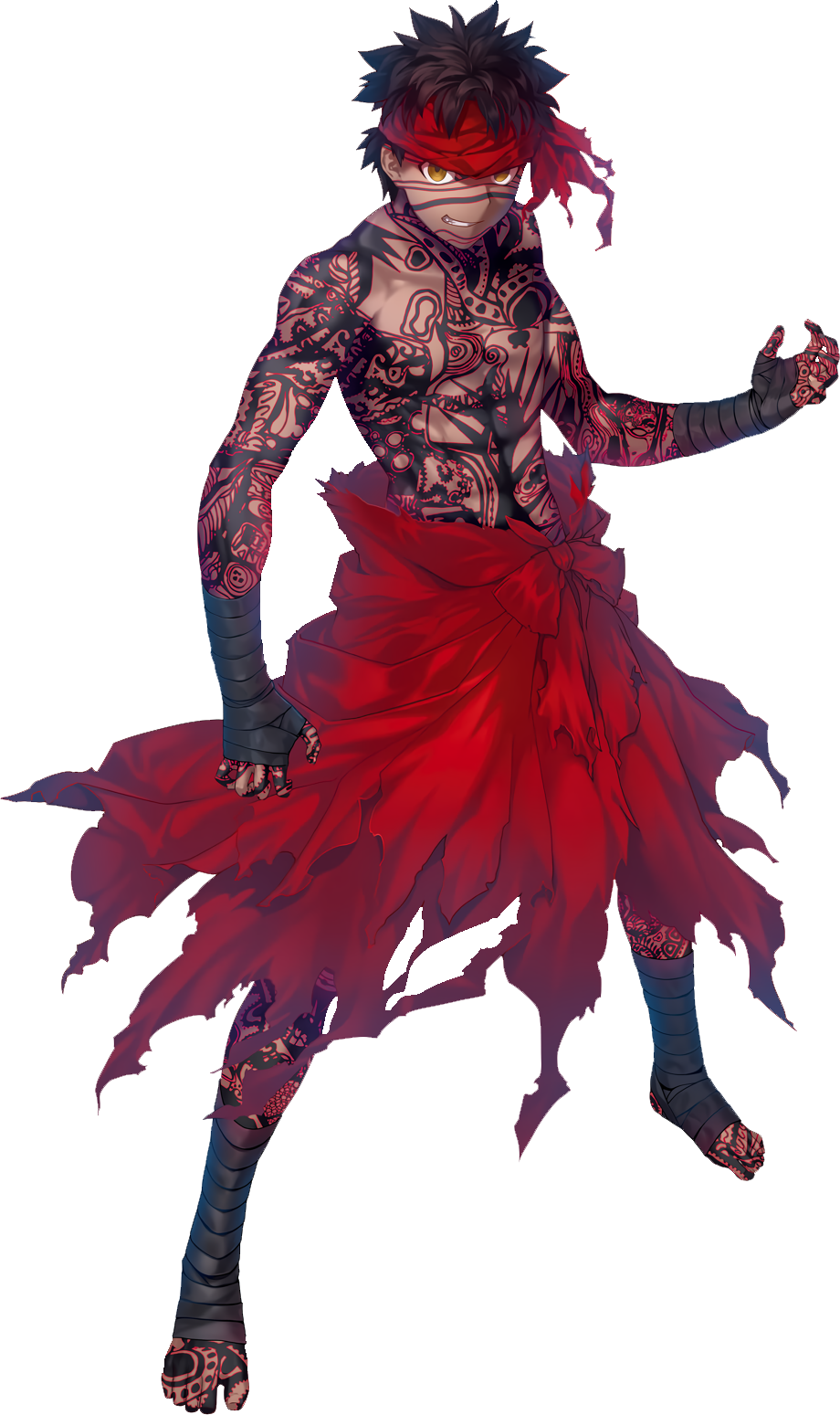
Crests of Power
Patterns of Breathing Blood
-
(Lvl 3) Swift (1 dead frog) :
This crest stimulates your body, making you extremely nimble and fast. While wearing this crest and raging, you do not trigger opportunity attacks.When you are at half health or below while the crest is active, you can Dash as a bonus action.
-
(Lvl 6) Swap (a small tentacle, 4 dead flies) :
Your mark reflexively draws you to a source of damage to gain more power. Once per rage, you can use this crest as a reaction when a target within 30 feet you can see is hit by an attack. You lash your tattoo out and exchange places with your target, avoiding all opportunity attacks and suffering the target's incoming damage in it's place.Your target must be Large or smaller. An unwilling creature must succeed on a Strength or Dexterity check contested by your Constitution check to resist this effect.
-
(Lvl 10) Fulgure (2 vials of eagle blood, 3 vials of lizard blood) :
For a short instant, your tattoo modifies your body structure to maximize your mobility. While raging, you can use this crest as an action to benefit from the effects of the Freedom of movement spell until the end of your next turn.On subsequent turns, you can use your action to extend these effects on yourself until the end of your next turn.
Patterns of Scabbing Blood
-
(Lvl 3) Coagulation (1 small rock) :
This crest lets you coagulate your blood right under your skin.
While wearing this crest and raging, you can choose to gain temporary hit points as part of your first successful attack on each of your turns. The amount of temporary hit points equals 1d6 + half your barbarian level rounded up.When you are at half health or below when using the crest, you gain an extra 1d6 temporary hit points.
-
(Lvl 6) Bloodletting (1 vial of fresh blue blood, 1 healing herb) :
You let yourself bleed out from your tattoo markings in order to cleanse your body and mind. Once per rage, you can use this crest as a bonus action to remove Charm, Fright, Poison or Paralysis from yourself. -
(Lvl 10) Sanguine armor (5 small rocks, 1 basilisk eye, 1 small piece of tree bark) :
While raging, you can use this crest as an action to create an armor of thick dried blood under your skin. You generate a damage threshold (PHB p.246) equals to your Constitution modifier + half your barbarian level rounded up. The threshold is applied after your resistances and lasts until the end of your next turn.On subsequent turns, you can use your action to extend these effects on yourself until the end of your next turn.
Patterns of Gushing Blood
-
(Lvl 3) Tendril Strikes (3 vials of snake blood) :
While wearing this crest and raging, long blood-ink tendrils protrude from your body while you rage. They count as martial weapons to you, have a reach of 15 feet and deal 1d6 bludgeoning, piercing or slashing damage (your choice). They use your Constitution modifier for their Attack and Damage Rolls. Whenever you use the Attack action, you can also make a Tendril Strike as a bonus action.When at half health or below while the crest is active, the tendril's damage is increased to 2d6.
-
(Lvl 6) Agony's Blast (10 stingers, 3 vials of octopus ink) :
Once per rage, you can use this crest as an action to make your markings burst into a clutter of crimson spikes. Each creature within 10 feet of you must succeed on a Dexterity saving throw (DC equal to 8 + your proficiency bonus + your Constitution modifier) or suffer 3d8 + your Constitution modifier as magical piercing damage, or half as much on a successful save. -
(Lvl 10) Bloody grasp (a small tentacle, 3 frog tongues) :
A part of your tattoo pulls off of your skin and shoots towards creatures within 35 feet to envelope them. While raging, you can use this crest as an action; you choose up to 4 creatures within range. An unwilling target must succeed on a Strength saving throw (DC equal to 8 + your proficiency bonus + your Constitution modifier) or become Grappled by you until the end of your next turn or until it successfully frees itself as an action.While it is affected by this feature, you can travel to a creature's meelee range or pull it towards yours as a bonus action. Used on a Huge or larger target, this ability automatically fails.
On subsequent turns, you can use your action to extend this effect on Grappled targets until the end of your next turn.
![]()
Divine Domains
Ward Domain
Gods of warding and protection include those worshipped by paladins, knights and other individuals who make it their duty to prevent harm upon the innocent and those who need protection; as well as those worshiped by wizards, enchanters and other individuals who study the art of protective and warding magic to offer safety to the weak. Many turn to them when they worry the worst might happen. Some gods carry out their duty sternly and without compassion, while others are viewed as heroes. The clerics of such deities are often sought to keep valuable objects away from the wrong hands, act as bodyguards, be the protector of villages or assure the safety of travelers and nomads.
Ward Domain spells
| Cleric level | Spell |
|---|---|
| 1st | absorb elements, alarm |
| 3rd | arcane lock, warding bond |
| 5th | counterspell, Leomund’s tiny hut |
| 7th | Mordenkainen’s private sanctum, Otiluke’s resilient sphere |
| 9th | circle of power, wall of force |
Bonus proficiencies
When you choose this domain at 1st level, you gain proficiency with heavy armor, 1 set of artisan's tools and the persuasion and arcana skills.
In addition, you learn the blade ward cantrip, which doesn’t count against the number of cleric cantrips you know, and you can use shields as spellcasting focus for your cleric spells.
Protective Glyph
At 1st level, you gain the ability to create magical, transparent force shields by tracing a glyph with your fingers.
As an action or a reaction when a creature you see within range is hit by an attack or forced to make a saving throw, you can choose one point or creature within 30 feet and trace a divine glyph towards it. A 10-foot radius sphere of force shields centered on it springs into existence and moves with it while you concentrate, as if concentrating on a spell, for up to 10 minutes.
The target, creatures and objects you choose gain a +3 bonus to AC and Saving throws while within in the area.
You can use this feature a number of times equals to your Wisdom modifier (minimum of once). You regain all expended uses when you finish a long rest.
Channel Divinity: Force Barrier
At 2nd level, you can conjure a force barrier that protects those who need it most. When a creature within 60 feet of you is hit by an attack or fails a saving throw, you can use your reaction negate the damage and effects of the attack or spell on the target, using your Channel Divinity.
Hostile creatures within 10 feet of it are pushed 15 feet away and must succeed on a Dexterity saving throw against your cleric spell save DC or be knocked prone.
Channel Divinity: Divine Glyph
Starting at 6th level, you can inscribe powerful glyphs.
Without expending a spell slot or material components, you can use your Channel Divinity to inscribe a glyph as per a glyph of warding spell of a level no higher than your highest level cleric spell slot.
The glyph you inscribe doesn't break when it is moved, and you can store the spell another creature willingly casts into it instead of your own. Stored spells can target multiple creatures; in which case, the glyph will target the nearest creatures within the stored spell's range upon activation.
An explosive rune takes 1 minute to inscribe and can be triggered a number of times equals to your wisdom modifier before erasing itself. A spell glyph take as much time as the casting of it's stored spell (at least 1 minute) and can be triggered a number of times before erasing itself. This number is equals to the total number of times the chosen spell was cast into it during and after it's creation.
Additionally, you can change the shape and size of the area affected by the explosive rune as long as it fits in a 20-foot radius sphere.
You can have up to two active divine glyphs at a time; placing an additional one erases the previous glyph of your choice.
Divine Strike
At 8th level, you gain the ability to infuse your weapon strikes with divine energy. Once on each of your turns when you hit a creature with a weapon attack, you can cause the attack to deal an extra 1d8 force damage to the target. When you reach 14th level, the extra damage increases to 2d8.
Glyph Scribe
At 17th level, your protective and warding abilities reach new levels, granting you the following benefits.
When you use your Divine Glyph feature, you can transfer an object's enchantments or another glyph's stored spells or magical effects into your new glyph, removing them from the previous glyph or object. The object or glyph must be within 5 feet of you to do so.
When holding an object's enchantment, the glyph's trigger, effects and limitations are the same as the magic item's. Additionally, triggering it doesn't erase it unless it destroys the enchantment (as it would with a Chime of Opening).
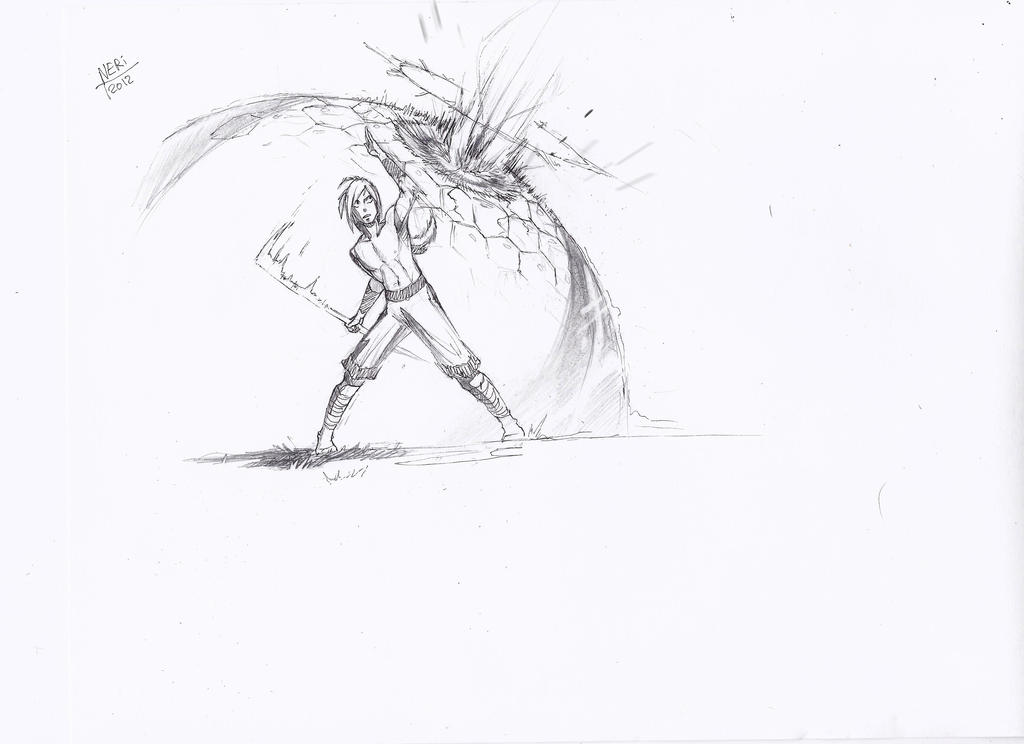

Druidic Circles
Circle of the Roots
The Circle of the Roots druids are among the most ancient of druid societies. Although they still make it their duty, they've gone beyond the simple task of protecting life. They have a special connection with nature's breath of life, which is particularly vigorous in plants. Many tales talk of the circle druids' appointment by nature's gods to plant all trees, bushes and flowers, creating forests and groves with the help of their trusty dolls.
One with Plants
When you choose this circle at 2nd level, you instinctively imbue plants within 10 feet of you with limited sentience and animation, giving plants and plant creatures the ability to communicate with you as if you shared a common language. You can question plants about past events, gaining information about creatures that have passed, weather, and other circumstances. Plants might be able to perform very simple tasks on your behalf, at the DM’s discretion.
Puppet Play
Starting at 2nd level, you share nature's capability to shape and give life, doing so with your carefully crafted and magic imbued dolls.
You gain proficiency with the Weaver's tools, which you can use to craft dolls. The dolls' statistics and crafting rules can be found in the dolls section later in this document.
You can throw and awaken up to 2 doll buds as an action. If you are unable to throw them, they awaken in the nearest free space within 10ft of you.
A doll remains awakened until it reaches 0 hp; until you either reach 0 hp or fall unconscious; until you magically fold it back to it's bud form as an action or until you complete a short or long rest. A doll's bud may be retrieved if it's physical form isn't critically damaged.
You cannot awaken dolls with a required druid level higher than yours. Once you awaken 2 dolls, you can't awaken more before you finish a short or long rest. This scales with your druid level, becoming 3 at level 6 and 4 at level 14.
Order of the Root
Starting at 6th level, your relationship with your dolls lets you further customize them. Choose one rootist affinities from the Rootist Affinities list. You may only change them after gaining a druid level.
Burst of Life
Starting at 10th level, your proximity with nature's breath of life lets you create plant life.
You can use this feature as an action, choosing a 20-foot radius circular zone on a surface you can see within 100ft. Non sentient plants of your choice appear and grow up to one size category above their full size, then live as they normally would in that environment. You shape them as they grow; they can turn an area into difficult terrain, provide cover or create new pathways, to the DM's discretion.
Once you use this feature you must finish a long rest before doing so again.
Tree's Slumber
Starting at 14th level you can turn yourself or an ally within 5 feet into a non sentient magic plant of your choice as an action. All of the target's conditions are healed upon shape shifting and it heals for 1 hit die + it's wisdom modifier at the beginning of each of it's following turns.
While it is in plant form, the target is immune to conditions and spell effects, cannot move or take any actions, and automatically fails Dexterity and Charisma saving throws. Additionally, the target adds 2 to it's AC for the duration. The plant form has half of the target's full hit points.
The target regains it's original shape when the plant form loses all it's hit points, the target heals back fully or after healing on it's third shape shifted turn. Turning back on it's turn counts as an action for the target. As it does, a bulb, flower or fruit the size of the target grows in seconds and the target emerges from it.
Once you use this feature you must finish a long rest before doing so again.
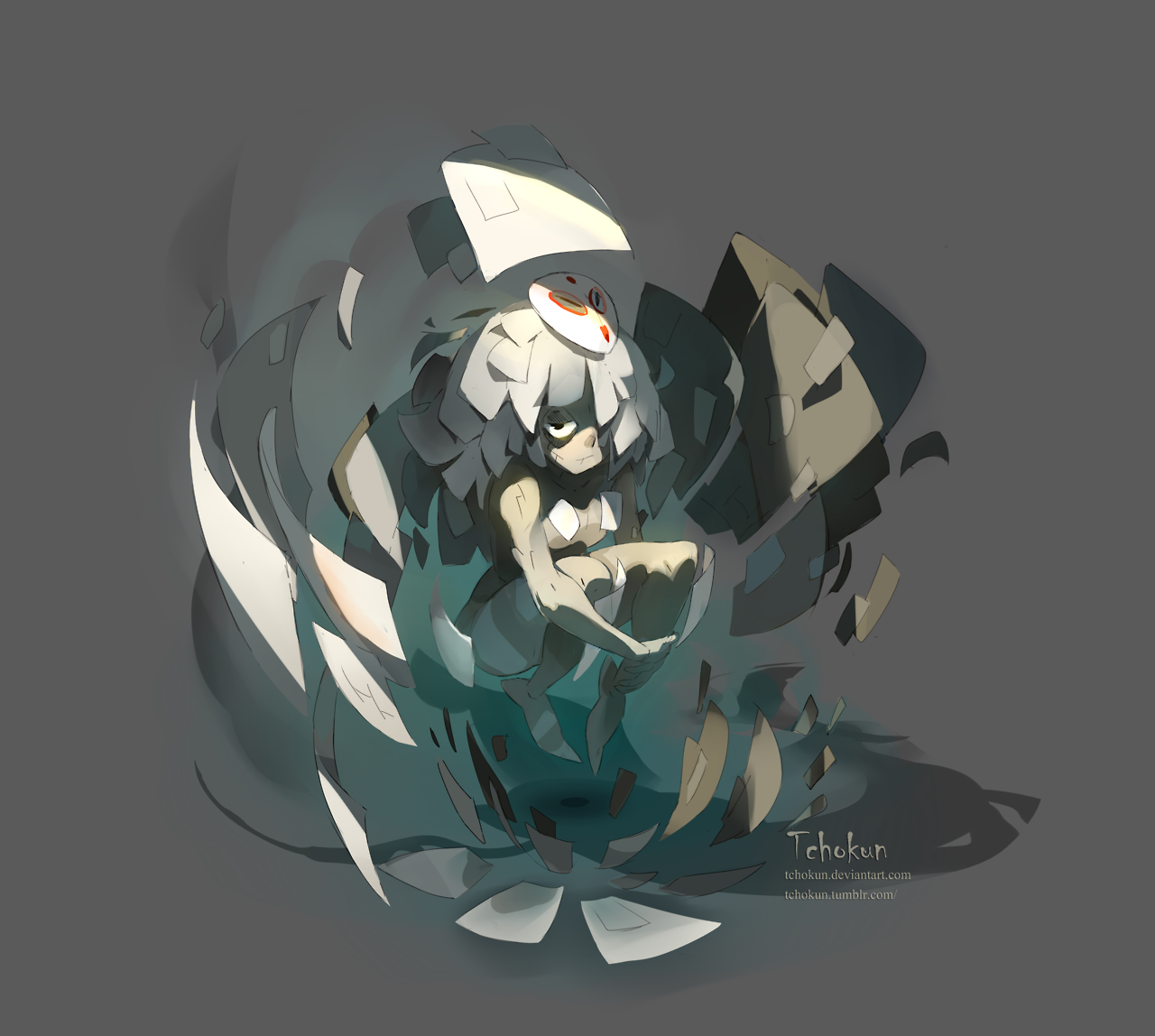
Rootist Affinities :
Explo-puppets
Your dolls contain an unstable magical energy. When they reach 0 hp they release it, dealing 1d8 + their constitution modifier as force damage in a 10 ft radius sphere. This does not damage their bud form.
Life link
Your dolls have an intimate link with your own life energy. As a bonus action, you may sacrifice any number of puppets within 30ft, making them reach 0 hit points. You regain 1d8 hit points per sacrificed puppets.
Sense Link
While an awakened doll is within 100 feet of you, you can communicate with it telepathically and see through it as an action, gaining the benefits of any special senses the doll has until the start of your next turn. Doing so does not affect your own senses.
Protective instinct
Your dolls feel your animosity and want revenge on those who hurt you or your friends. You can use this feature as a reaction when a target creature you can see inflicts damage to you or an ally creature you can see. On their next turn, dolls don't trigger opportunity attacks, their speed is doubled and they have advantage their first attack against the target. They focus on the target as much as possible.
Whispers of Life
You take control of your doll's actions momentarily. You can use this feature as an action to whisper to your puppets through your mind, controlling each of them on their next 2 turns. This requires you to maintain concentration, as if concentrating on a spell.
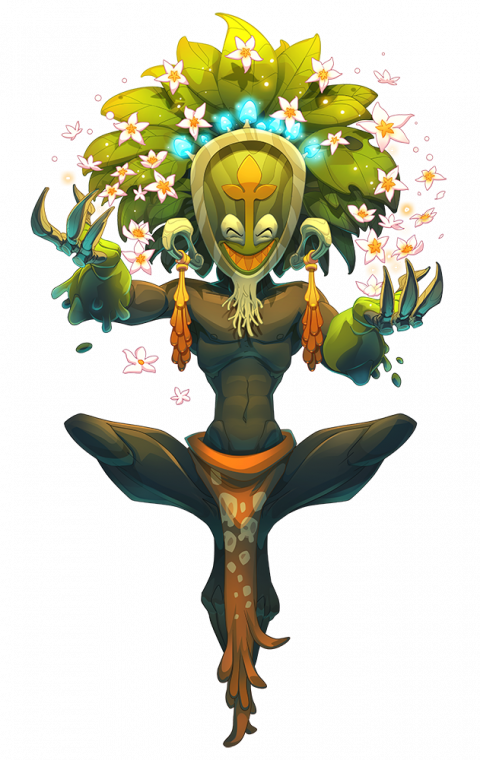
Dolls
Dolls are the greatest of the Root druids' creations as well as their most prized tools and devoted companions. You can craft a single doll as part of a short or long rest. Crafting a doll requires and consumes it's crafting materials.
Once successfully crafted, an unawakened doll has the shape of a fine sized bud, weighting about 0.5lb. The doll buds unfold into their full doll form when awakened as per your Puppet Play ability. They are unable to speak but you can communicate with them as you would with plants.
Dolls share your initiative. Their attacks and spells use your Druid Spellcasting Attack Bonus and DC, unless specified otherwise. A doll's behavior during combat is dictated by it's urge, which represents the doll's reason purpose and drive. A doll has it's own personality, but it identifies it's foes and allies by interpreting it's creator's feelings; as a result, a doll's behavior can give away the druid's animosity or fondness of others.
Crafting your own dolls
Here are a few broad guidelines to balancing your custom made dolls:
-
The craft materials include some components of the spells it has access to and those necessary for the actual doll's structure, which should also be thought of. It may only contain a spell you've learned about thoroughly.
-
It's size, AC, HP, speed and stats reflect the dolls role, physical structure and urge.
-
The skills, resistances or vulnerabilities are added based off of the actual doll's structure, not it's purpose. Dolls being constructs, they have the common construct immunities.
-
The urge is a simple and broad sentence that hints at how and when it moves and uses it's abilities. Keep in mind dolls' urges are meant to be broad enough for the DM to mimic the dolls' potentially poor choices and lack of judgment as they are...simple minded.
-
It has the bare minimum actions needed to fulfill it's urge. It should be able to use all it's features in a single turn.
-
If it is a utility oriented doll (pull carts or act as a large flying mount for instance), it's level varies with it's effectiveness.
-
Its level shouldn't be below the dolls' highest level spell. Consider adding levels if it has more than one spell.
-
Strongly consider adding a few levels if you give the doll special features like Precise order, Servant or a condition inducing feature (Grapple, Restrain...).
Last but not least , make sure your DM approves of the doll before ever crafting and using it.
Fighter Doll
Medium construct (doll), Craft materials: 2 small rocks, a medium piece of cloth, 10 small bones
- Required druid level: 2
- Armor Class 13
- Hit Points Twice your druid level value
- Speed 35ft.
STR DEX CON INT WIS CHA 13(+2) 17(+3) 10(+0) 11(+0) 6(-2) 15(+2)
- Damage immunitites : Poison
- Condition immunities : Charmed, Exhaustion, Frightened, Paralyzed, Petrified, Poisoned
- Senses : same as the druid's + Blindsight 60ft
- Skills Acrobatics (+3)
- Urge This doll is designed to pummel it's nearest enemies .
Evolution : This doll's damage die varies depending on the druid's level, becoming 1d6 at level 10.
Actions
Multiattack. This doll performs two doll strike attacks as an action on it's turn.
Doll strike. Magical Melee Weapon Attack: + (druid spellcasting attack bonus) to hit, reach 10ft., one target. Hit: 1d4 + 2 bludgeoning damage.
Biter Doll
Medium construct (doll), Craft materials: 6 wolf fangs, a medium piece of cloth, 3 Oak leaves, 1 vial of acid, 1 medium piece of tree bark
- Required druid level: 6
- Armor Class 14 (Natural armor)
- Hit Points Twice your druid level value
- Speed 30ft.
STR DEX CON INT WIS CHA 16(+3) 10 (+0) 14 (+2) 6 (-2) 12 (+1) 19 (+4)
- Damage resistances: Acid
- Damage immunitites: Poison
- Condition immunities: Charmed, Exhaustion, Frightened, Paralyzed, Petrified, Poisoned
- Senses: same as the druid's + Blindsight 60ft
- Skills Acrobatics (-2)
- Urge This doll is designed to grapple and whittle down it's nearest enemy.
Doll Tinkering Starting at druid level 10, you can expend twice as much materials when crafting this doll to make it Large. At druid level 14, you can expend 4 times the amount of materials to make it Huge.
Actions
Big bite. Magical Melee Weapon Attack: + (druid spellcasting attack bonus) to hit, reach 5ft., one target. Hit: 1d6 + 3 piercing damage. The target is grappled (escape DC = druid's spellcasting DC). Until this grapple ends, the target is restrained, and the doll can't bite another target
Spellcast. It can cast a 5th level acid splash from it's mouth.
Crazy Doll
Small construct (doll), Craft materials: a small bird's brain, a rotten branch, a small peice of cloth, 1 medium Oak leaf
- Required druid level: 6
- Armor Class 10
- Hit Points your druid level value
- Speed 50ft.
STR DEX CON INT WIS CHA 5(-3) 10 (+0) 16 (+3) 8 (-1) 12 (+1) 19 (+4)
- Damage immunitites: Poison
- Condition immunities: Charmed, Exhaustion, Frightened, Paralyzed, Petrified, Poisoned
- Senses: same as the druid's + Blindsight 60ft
- Skills Stealth (+3)
- Urge This doll is designed to stay on the druid's shoulder and whittle down it's nearest enemies.
Servant. Starting when it awakens, the druid may give this doll a simple command as a bonus action. It heads back towards the druid once it has accomplished it's task.
Evolution. : This doll's spell's level varies depending on the druid's level as described in it's action.
Bonus actions
Spellcast. It can cast a 3rd level dissonant whispers .
Actions
Spellcast. It can cast blindness/deafness up to 3rd level as an action. It can cast it up to 5th level starting at druid level 10.
Sacrificial Doll
Small construct (doll), Craft materials: 1lb of sulfur, 1 small piece of cloth, a small shell
- Required druid level: 10
- Armor Class 12 (Natural armor)
- Hit Points Twice your druid level value
- Speed 40ft.
STR DEX CON INT WIS CHA 10(+0) 10 (+0) 16 (+3) 14 (+2) 12 (+1) 19 (+4)
- Damage resistances: Fire
- Damage immunitites: Poison
- Condition immunities: Charmed, Exhaustion, Frightened, Paralyzed, Petrified, Poisoned
- Senses: same as the druid's + Blindsight 60ft
- Urge This doll is designed to trigger an explosion as soon as it enters an enemie's meele range.
Precise order. As it awakens, the druid may give this doll a target creature or area within 40 feett. The doll goes towards it's target and detonates . If there are no given targets, the doll will go towards it's nearest enemy.
Actions
Spellcast. It casts a 4th level fireball spell centered on itself.
Bodyguard Doll
Large construct (doll), Craft materials: 1 wooden shield, 1lb of coton, 1 large peice of cloth, 15ft rope
- Required druid level: 14
- Armor Class 16 (Natural armor)
- Hit Points 3 times your druid level value
- Speed 20ft.
STR DEX CON INT WIS CHA 18(+4) 4 (-3) 16 (+3) 2 (-4) 12 (+1) 16 (+3)
- Damage immunitites: Poison
- Condition immunities: Charmed, Exhaustion, Frightened, Paralyzed, Petrified, Poisoned
- Senses: same as the druid's + Blindsight 60ft
- Skills Acrobatics (-3)
- Urge This doll is designed to guard the druid and trip any creature that tries to go away from it.
Precise order. As it awakens, the druid may give this doll a target within 30ft to pursue. If there is no given target, the doll stays near the druid.
Tripping vines. If this doll lands an opportunity attack, it's target falls prone.
Actions
Vine whip. Magical Melee Weapon Attack: + (druid spellcasting attack bonus) to hit, reach 15ft., one target. Hit : 2d6 + 4 slashing damage.
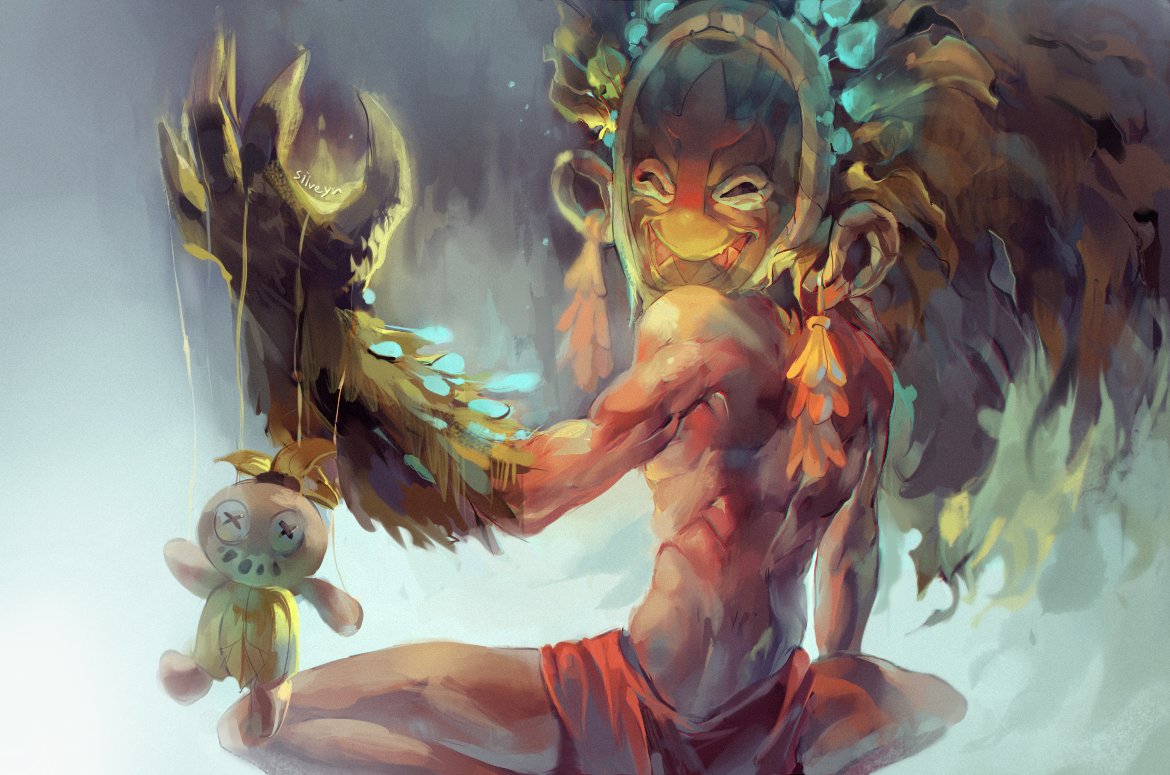
Martial Archetypes
The Gamester
Gamesters are fighters that use their fighting skills to push encounters into states of gamble. Chance greatly affects these fighters, though not all of them are aware of it. Everything is a game of luck; and Gamesters often force lady luck's hand.
Cross and Pile
Starting at 3rd level, you can use this feature before knowing the outcome of a contest roll, skill check or saving throw to choose a coin's side and flip it. If it lands on the chosen side, add 1 to your roll (this becomes 2 at level 15). If not, subtract that value from your roll instead.
After flipping your coin, you can choose to do so again. If it lands on the same side as the first flip, it's effects are doubled. If not, it's effect is removed.
Game Fanatic
Beginning at 7th level, you choose one favorite game from the Favorite games list and gain it's feature. You gain an additional one at 10th and 18th level. When gaining an additional game, you can also choose one of the favorite games you know and replace it with another.
Additionally, you gain proficiency with a gaming set if you play a Tavern game with it at least once.
Passe-Dix
At 15th level,, after failing a skill check or saving throw, you can use this feature to choose High (above 11) or Low (below 10), and roll 3d6. If the result matches your choice, you can consider your roll a natural 20. If it matches the opposite choice, you consider your roll a natural 1. If the result is 10 or 11, nothing happens. Whenever you use this feature, you must use the result's value for your roll.
You can use this feature a number of times equals to your Charisma modifier. You regain all expended uses after a long rest.
Lucky Break
Starting at 18th level, your simple presence can affect other's luck. When you are hit by an attack, you can use this feature to roll a d20. On a 15 or higher, the attack misses and is considered a natural 1.
Once you use this feature, you must complete a short or long rest before doing so again.

Favorite Games
Blackjack
Cards are an extension of you . You can attempt to craft a fighting deck by expending a deck of cards and a piece of ore during your long rest. The deck is a special simple melee weapon. It deals 1d6 peircing damage and has the thrown(10ft/60ft) and finesse property. When you throw a card as an attack , you ignore partial cover and 3/4 cover as you arc it's path. Every fighting deck has 13 cards . Before throwing the last card of a deck as an attack, pick a number from 1 to 4 and roll 1d4. If it falls on your chosen number, the attack is considered a critical hit. Thrown cards cannot be retrieved. These decks cannot be used to play Tavern games.
Thimble-rig
You can't stand losing. You always set the games' rules so that you have the upper hand. Whenever you make a second coin toss as part of your Cross and Pile feature, your first flip's effects are removed, regardless of the second coin toss' result. When you roll as part of playing a Tavern game you know or performing a Favorite game, you can do every required rolls twice and pick any of the two results.
Roulette
You rely on luck to make your hits more effective. At the start of your turn, you can use this feature (no action required) to call a number from 1 to 6 and roll 1d6. If the result matches your called number, you can add your Charisma modifier to all of your attacks' attack and damage rolls until the end pf your turn.
Backgammon
You mentally prepare to move audaciously, putting faith in your luck for your success. At the start of your turn, you can use this feature (no action required) to roll 2d6. If you roll a double, add 5 times your roll to your movement speed, and have advantage on acrobatics and athletics rolls for the turn.
Bluff
Bluffs and trickery become your tools. You can trick a creature into briefly turning it's attention towards you. You can use this feature as a reaction when your target is being attacked. The target must win a contest roll between it's Wisdom (Insight) against your Charisma (Deception or Persuasion) or the target loses it's reaction and the attack against it has advantage. The target adds 2 to it's contest roll for every time you've used this feature against it within the last 24 hours .
Monastic Traditions
Way of the Swaying Paw
Most drunken fighting styles rely on the combatant's unpredictable movements to avoid or redirect attacks. Those of the Way of the Swaying Paw developed their technique to protect their home from individuals who would disturb their casual brewing and drinking traditions with bad intentions.
They've encompassed their use to a state of ebriety to gain intricate control over their inner Ki and that of their opponents. They harness this magical energy's flow to push their body beyond their physical limits as well as to seamlessly manipulate their opponent's.
Bonus Proficiencies
In this path, you study body anatomy, brewing and creativity to fully make use of your techniques. You gain proficiency with the Medicine and Nature skills.
Additionally, you gain proficiency with the Brewer's Supplies and Improvised weapons, which count as Monk weapons to you.
Swaying Paw Technique
When you choose this tradition at 3rd level, you learn to intricately read and manipulate your opponent's Ki flow as you sway and bump into it, letting you seamlessly hinder and guide it's body and positioning through your ostensibly erratic swings, staggers and lurches.
Whenever you target a creature with one of the attacks granted by your Flurry of Blows, you can impose one of the following effects on that target, weather the attack hits or not:
- It must succeed on a Dexterity saving throw or be knocked prone.
- It must succeed on a Wisdom saving throw or you can move the creature along with you for up to half your speed.
- It must succeed on a Strength saving throw or have it's speed reduced to 0 and can’t benefit from any bonus to its speed until the end of your next turn.
Body Control
Starting at 6th level, you lean on your opponent's bodies more instinctively as you move around.
Ground Work. Being prone no longer grants creatures within 5 feet of you advantage on their attacks against you. While you're prone, you can stand up by spending 5 feet of movement rather than half your speed.
Flexibility and Control. You can move through and willingly end your movement in a creature's space regardless of it's size. While you do so, you cannot unwillingly provide cover for the creature. When an attack against you misses as you move through or share a creature's space, you can spend 1 ki point as a reaction to make it hit that creature instead.
Leaning Wobble
At 11th level, you truly use of your opponent's bodies to your advantage through a combination of acrobatic clutches and extremely close combat maneuvers. While you share a creature's space, your attacks against it have advantage and attacks against you have disadvantage.
Tipsy Throw
Starting at 17th level, the mastery of ki enhances your techniques, letting you use this magical energy to push and throw your enemies with overwhelming force.
As an attack, you can spend 3 Ki points to target a creature within 5 feet of you and project it up to 60 feet away from you in a direction you choose. An unwilling target must succeed on a Dexterity saving throw against your Ki save DC or take 5d10 + your Dexterity modifier as magical bludgeoning damage and fall prone at the end of the throw. On a successful save, it takes half as much damage and doesn't fall prone.
If the thrown target is thrown onto another creature, it must also make a Dexterity saving throw and suffer the according effects.
For more flavor...
For the full fantasy, try harnessing the powers of the Barrel of Everthirst* with this monk!
As a DM, you can also think of adding particular effects or damage to the tipsy throw, depending on the situations!
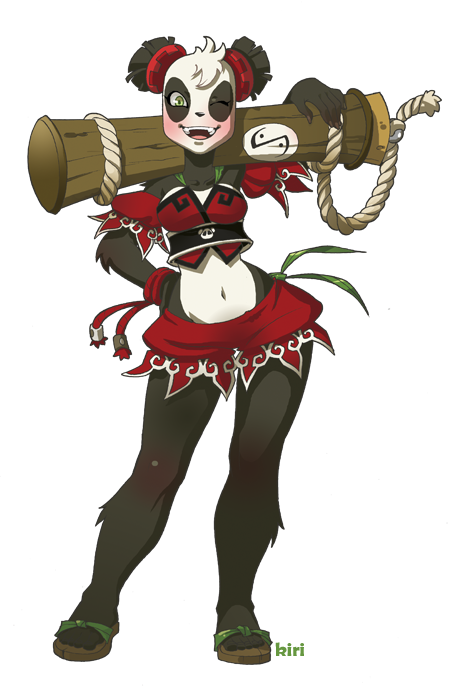

Way of the Relic Guardian
Monks of the Way of the Relic Guardian worship ancient magical relics, which usually take the form of a small piece of wearable equipment. It is said that the relics they worship hold soul fragments of a creature so ancient and terribly powerful that even the gods fear it's wake. Relic Guardians are tasked with the care and protection of these relics; They study the spirit held within these objects and master their own in order to tap into it's powers. Their psyche must become flexible, sober and resilient enough to sustain the trance like psychic connexion with the relics and prevent them from going mad afterwards.
Tuning Meditation
You can unlock a relic's abilities as part of a short or long rest through a 10 minutes Meditation. To unlock a relic ability, it must be of your Monk level or lower.
Relic Guardian Tradition
This monastic tradition involves deep studies of relics, their history and the spirit they may hold. You gain proficiency in the Nature, History and either the Arcana or Religion skills.
Relic Trance
Starting at 3rd level, you've learned enough to attune your spirit to the relics, letting you unlock and access their hidden powers.
As a bonus action, you can choose one relic you are carrying. The relic resonates with your psyche and you enter a Relic trance. For the duration of the trance, you have advantage on Wisdom saving throws and can use and benefit from the chosen relic's abilities you've unlocked through your Tuning Meditation. This trance lasts until you no longer carry the relic, you end the trance (no action required), you die or use this ability again.
Tempered Mind
At 6th level, the control over your mind grants you the ability to withstand and push past physical strain and limits. While in a Relic Trance, whenever you make a Constitution, Dexterity or Strength check, you can add one Martial Arts die to your roll.
Spiritual Touch
Starting at 11th level, your control over the relics' powers lets you briefly impose a light trance to those you consider worthy.
While you are in a Relic Trance, as an action, you can spend 1 Ki point to touch a willing creature within 5 feet and choose an unlocked passive feature of a relic you are carrying. The target can use the chosen feature once, without needing to spend Ki points. It mut do so before your Relic Trance ends or you use this feature again, otherwise the use is lost.
You can use this feature three times. You regain all expended uses when you finish a long rest.
Variant : Tuning risk
With this variant, you also must succeed on a Wisdom Saving throws against the relic abilitie's unlock DC to unlock it. Whenever you fail such a saving throw, your Tuning meditation fails and you suffer the according psychic damage, as shown in the table below. Once you've unlocked a relic ability, you can only access and benefit from it through your Entrancing Relics feature.
| Ability level | Damage on failed save |
|---|---|
| 3 | 2d4 |
| 6 | 2d6 |
| 17 | 2d8 |
When making a Relic Guardian...
When you make a Relic Guardian, you should also think about the context surrounding relics in the world. Do Relic Guardians make a secret society? are they part of a bigger one? Do they have their own culture? Are the relics known to the world? Do these monks have monasteries? How many and how do they interact with each other? Does every monk there have a relic? Do they instead roam the land? How did you encounter your master, and how was he living? How many relics do you know exist?
Also, you should try to flesh out what are the relics exactly, and maybe work with your DM to determine their exact place in the world, in it's cosmology and it's history. What form do the relics take; Beads on a bracelet? Masks? ? Are they craftable? By whom? How? Who knows about them? What is the creature who's spirit they hold? Is it linked to a god? Do other individuals worship it as well? Why was it's spirit split? When? How well is the creature known by the world? Can the creature who's soul they hold be awakened? How? How many exist? Are there many set of relics for different creatures? Do relics have sentience? How does that interact with you tapping into their powers? How many can you own?
Relics
Fool's Mask
Wearing this mask puts it's wearer in a state of constant, unjustified and intense foolishness and cowardice.
-
(Lvl 3) Dart mastery. - unlock DC: 12
You have the ability to materialize a Dart in the mouth hole of your mask and throw it as ranged weapon attack, without using your hands. Darts made in this way have a range of 60/100 and disappear immediately after they are used. They deal piercing damage and count as Unarmed Strikes for you. -
(Lvl 6) Resilient Escapist. (passive) - unlock DC: 15 Whenever you start your turn with 0 hit points and aren't dead, you can spend 1 Ki point to regain 1 hit point and
gain the benefits of the Disengage action until the end of your following turn. -
(Lvl 17) Fool's Speed. - unlock DC: 17
You can make use of your Ki to run past any obstacle. As an action, you can spend 3 Ki points to gain the benefits of the freedom of movement spell for 1 minute or until you are incapacitated.
Psycho's Mask
Wearing this mask puts it's wearer in a state of constant unjustified and febrile bloodlust and mental instability.
-
(Lvl 3) Legendary Hornwhips -unlock DC: 13
Once on your turn, you can pull or stow (no action required) either one or both of the Horns from the relic. They turn into a sword tipped retractable whips you are proficient with and have a 15-foot reach. They act as a prehensile extension of your hands while you hold them. They deal slashing damage and count as Unarmed Strikes for you. -
(Lv 6) Blinding Folly. (passive) - unlock DC: 16
On your turn, you can spend 1 Ki point to gain advantage on attack rolls until the start of your next turn. Whenever you attack while benefiting from this feature, you must choose your target at random from among the creatures you can see within your range. If a creature provokes your opportunity attack, you must make that attack if you're able to. -
(Lvl 17) Psychotic Frenzy. - unlock DC: 18
As an attack, you can pay 2 ki points for every 30 feet you wish to move, to a maximum of 60 feet; you perform inhumanly fast combos in a 20-foot radius sphere centered on you at the end of every 30 feet of movement. Every time, creatures in the area must succeed on a Dexterity saving throw against your Ki save DC or take 5 Martial arts die + your Dexterity modifier as magical slashing damage, or half as much on a successful save.
Bold's Mask
Wearing this cool looking mask puts it's wearer in a state of constant and intense calm, self-conceit and stoicism.
-
(Lvl 3) Unerrant Focus - unlock DC: 12
Whenever you target a creature with one of the unarmed strikes granted by your Flurry of Blows, it's attacks against you have disadvantage until the start of your next turn. -
(Lv 6) Placid Composure (passive) - unlock DC: 13
Whenever you make a Charisma or Wisdom check, you can spend 1 Ki point to gain advantage on the roll. -
(Lvl 17) Flowing Zephyr - unlock DC: 16
As an action, you can spend 4 ki points and choose a number of creatures up to your Wisdom modifier within 60 feet. You can make one melee weapon attack against each target. Additionally, each target takes 5d10 force damage, and you teleport to an unoccupied space you can see within 5 feet of one of the targets you hit or missed.

Making or Customizing Relics
If you choose to homebrew your own relics, be aware that not only do they add and potentially change the effects granted by features of this subclass, but they can potentially be used in tandem with one another. Therefore, not only should you try to keep their mechanics simple and seprate from one another, but you also shouldn't aim at making particularly powerful ones; especially if your monk will own many.
Ideally, each relic can stand alone and be viable for a whole campaign, but they are straight forward and linear in their use. In other words, this monk's versatility should come from the variety of relics it has at it's disposal; not from a relic in particular. Of course, it also depends on the direction you are taking with them.
Should you ever want to homebrew more relics, here is the base template:
Relic Name
Description
-
(Lvl 3) Ability name -unlock DC:- :
Ability description -
(Lvl 6) Ability name (passive) -unlock DC:- :
Ability description -
(Lvl 17) Ability name -unlock DC:- :
Ability description
More Tips...
You can customize your relics' mecanics further. Some ideas are:
- Make the relics linkable to the monk in a similar way to the warlock's Pact of the Blade, to overcome the hinder of carrying objects.
- For powerful relics, subject the player to enchantment spell effects or other risky drawbacks (madness, illusion spell effects...).
- Add a curse effect to a failed attempt of unlocking an ability.
- Add a lingering effect when the relic is removed.
- Make each relic have a single ability so they must be switched more often.
- Choose a relic format that lets you wear many at once so you don't have to switch through them.
- Add utility features (languages, proficiencies, etc.) to a relic or a relic set.
- Make benefits that scale with the number of a set's relics you have.
- Make a single relic that can hold many soul fragments (so may set of abilities) that you can acquire through meditation or visiting temples, monasteries or sacred places of legend. You could therefore switch which soul fragment you choose for your relic trance, instead of choosing a relic.

Roguish Archetypes
Shadowmeister
As a Shadowmeister, you have developed arcane skills with the shadow weave. This allows you to stealthily approach and trail your targets through combinations of magical traps, subterfuge and illusions.
Friend of Shadows
At 3rd level, your affinity with the shadow weave grants you unusual arcane capabilities. You learn the shape shadows and minor illusion cantrips. Additionally, you can cast disguise self a number of times equals to you Charisma modifier. You regain all expended uses after completing a long rest.
Shadowmeister Traps
At 3rd level, you gain control over the shadow weave and can manipulate it to set magical, invisible traps. As an action, you can use this feature to set one of the following traps on a surface within 15 feet of you.
Puddle. As this trap activates, a sticky puddle of dark ooze appears in a 15-foot square centered on it. Creatures within the area have their movement speed reduced by half and cannot benefit from any bonus to their speed until the end of their next turn.
Bubble. As this trap activates, darkness fills a 10-foot radius sphere centered on it. It spreads around corners and the area is heavily obscured until the end of your next turn.
Tunnel. As this trap activates, you choose a Large or smaller creature within 10 feet of it; the target is teleported to the nearest Tunnel trap within 45 feet.
Every turn, you can activate one Shadowmeister trap (no actions required) at any time before the start of your next turn. A trap lasts for 10 minutes, until it activates or until you remove it as an action.
Shadow Manipulation
At 13th level, you gain the ability to use shadows to materialize objects. As an action, you can shape a shadow you touch into an non-magical object that fits in a 1-foot cube and materialize it for 5 minutes. You can only have one object materialized in this way at a time.
Shadow's Companion
At 17th level, you can materialize and animate your shadow.
You can use this feature as an action to make an illusory yet tangible double of you appear in a free space you can see within 60 feet. It plays on your initiative and has twice your speed. It can gesture, speak, and behave in whatever way you choose and you perceive through it's senses as if they were your own.
It lasts for 10 minutes, until you dissipate it (no action required) or until you use this ability again.
Shape Shadows
Transmutation Cantrip
- Casting Time: 1 bonus action
- Range: 30 feet
- Components: S
- Duration: up to 10 minutes (see below)
You choose an area of shadow that you can see within range and that fits within a 15-foot square. You manipulate it in one of the following ways:
• For 10 minutes, you can move or otherwise change the shape of the shadow as a bonus action, stretching it across surfaces and around corners, up to a distance equals to the spell's range. While you do, the shadow covers the same amount of surface area. You sense through Blindsight any creatures or objects who's shadow or physical body touches the shadow you are manipulating.
• For 10 minutes, you can cause the shadow to form into simple shapes and animate at your direction.
You can dissipate an effect at any time (no action required). This spell’s range increases by 10 feet when you reach 5th level (40 feet), 11th level (50 feet), and 17th level (60 feet).
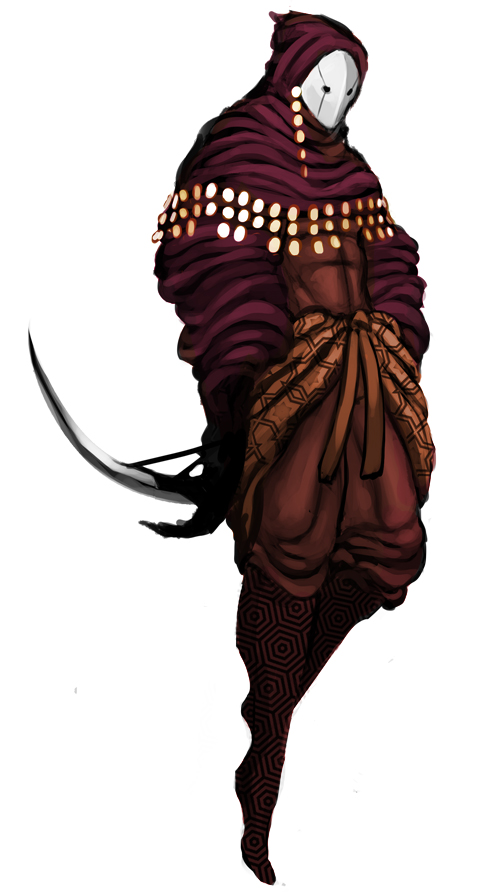
Sorcerous Origins
Time Sorcery
Your innate magic comes from the essence of time itself. Many with this power can trace their magic back to ancestors who mingled with mythical time manipulating creatures, ancient powerful wizards who studied the flow of time for their personal endeavors, or early contact with time ripples and dilatations. Your lineage might include the influence of time domain gods, life in a chaotic time sensitive dimension or a magical bond with a powerful time altering artifact. Whatever the case, time magic is now innate to your being.
Clockwork Mind
At 1st level, your proximity with time itself grants you innate understanding of it's flow and clockwork devices.
You gain proficiency with the Tinker's Tools. Additionally, you always know what time it is in places you're familiar with, as well as how time flows there. You can innately feel when and how the flow of time is distorted in your location
Time Manipulation
At 1st level, you can slightly accelerate yourself to enhance your reactions.
Readying an action no longer requires you to choose the action you will take and readying a spell no longer requires you to cast it and use your concentration to hold its energy. When using the Ready action, you can choose the reaction's trigger to be any perceptible circumstance or the end or start of a turn. Whenever you Ready an action and haven't yet moved on your turn, you can forgo your turn's movement to Ready a movement of up to half your speed. This movement gets triggered along with your readied action.
When you reach 3rd level in this class, you can alter time flow around you to move at blinding speed. Whenever movement you've readied is triggered, you can expend it by teleporting to a point within your readied movement's maximum distance.
Chrono Warp
Starting at 6th level, you have slight control over the timing of events around you. You now add your Charisma modifier (minimum of 0) to your initiative modifier.
As an action, you can target two creatures other than yourself within 30 feet of you. You either add or subtract 2d4 from their initiative score, moving them up or down the initiative order accordingly. If this would move them higher than you in the initiative order, they take their turn right after you this round. Targets cannot take two turns in a single round as a result of this effect
Time Robbing Spells
Beginning at 14th level, you can take other's time away from them. Whenever you hit a creature with a spell attack, you can spend 2 sorcery points to slow it as per the slow spell, until the end of your next turn. While a target is slowed in this way, you gain the benefits of the haste spell. You do not suffer lethargy when the haste effect ends.
Time Freeze
At 18th level, as an action, you can spend 6 sorcery points to choose a point you can see within 30 feet; time is stopped in a 30-foot radius sphere centered on it for up to 1 minute or until you lose your concentration (as if concentrating on a spell) and you are immune to it's effects.
Creatures in the area must succeed on a Charisma saving throw or be Paralyzed for the duration. A creature that enters the area must also succeed on a Charisma saving throw or be Paralyzed. At the end of each of its following turns, a creature can make another Charisma saving throw; on a success, it is no longer affected by the frozen time.
Additionally, you learn the time stop spell, which doesn’t count against your number of sorcerer spells known
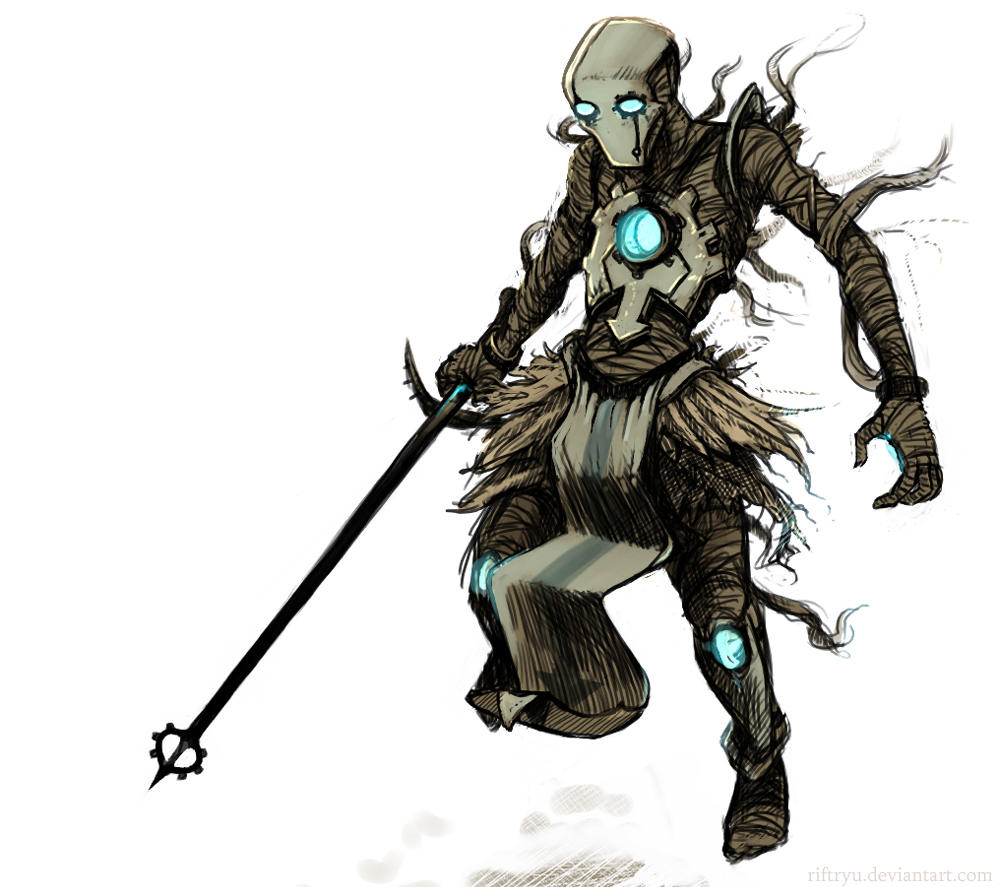
Otherworldly Patrons
The Astral Dragon
You've made a pact with an astral dragon, the natural residents of the astral plane and one of the only creatures that can travel through all existing planes at will. These dragons are highly intelligent, and their solitary chaotic nature makes their personality quite complex and often quirky. An astral dragon's interests may vary, but it often has personal endeavors such as treasure hunting, studying spells, or simply living free of any restrictions. They are the embodiment of freedom and thought.
Astral Dragon Expanded Spells
| Spell level | Spells |
|---|---|
| 1st | feather fall, shield |
| 2nd | detect thoughts, see invisibility |
| 3rd | blink, sending |
| 4th | greater invisibility, storm sphere |
| 5th | telekinesis, teleportation circle |
Portal Gates
Starting at 1st level, your connection to the realm of thought lets you manipulate magic with your bare hands, granting you the ability to you use your hands as arcane focuses as well as to open colorful, mist filled portals.
You can use this feature as a bonus action to open a number of Portal Gates up to your Charisma modifier (minimum of 2) on points you can see within 40 feet of you. Each Portal Gates has the shape of a disk with a radius of up to 5 feet. You decide their orientation as you open them, and both of their sides act as portals.
A creature that shares a Portal Gate's space and fits in it can expend 5 feet of movement to enter it. The creature then teleports to an empty space inside another Portal Gate you choose within 40 feet of it. If no such space is available, the teleportation fails.
A Portal Gate lasts until the end of your next turn.
Portalist Reflex
Beginning at 6th level, Your expertise at manipulating your portals lets you use a reflexive portal maneuver.
As a reaction when you see a weapon or spell attack hit it's target, you can redirect it to a point or creature you can see within 60 feet of you, making it miss it's original target. An attack redirected towards a creature uses the attacking creature's attack and damage rolls. Redirected attacks or objects must fit into a Portal Gate.
You must finish a short or long rest before you can use this feature again.
Astral Mind
Starting at 10th level, your mind becomes closer to that of your patron; perfectly serene and unchangeable. It is similar to the astral void, which can overwhelm the mind of those who manipulate it.
You have resistance to psychic damage and have advantage on Intelligence and Wisdom saving throws. Whenever a creature attempts to charm, frighten, possess, or magically affect your mind, it must succeed on an Intelligence saving throw against your warlock spell DC or become stunned until the start of your next turn.
Psychic Storm
Starting at 14th level, you can use this feature as part of an attack to tap into the astral dragon's lair powers and manifest psychic winds around you.
You choose a number of creatures up to to your Charisma modifier within 120 feet. Targets are pushed up to 15 feet in directions you choose and take 3d10 psychic damage. A targeted creature must succeed on an Intelligence saving throw against your warlock spell DC or be affected by the psychic wind's mental effects, which are determined by the following table :
| d20(per creature) | Mental Effect |
|---|---|
| 1-9 | 4d10 psychic damage |
| 10-14 | Stunned for 1 minute; it can repeat the saving throw at the end of each it's turns to end the effect |
| 15-17 | Unconscious for 1 minute, until it takes damage or another creature uses an action to shake it awake |
| 18-20 | Short term madness for 5 minutes (DMG p.259) |
Once you use this feature, you can't use it again until you complete a long rest.
14th level Variants...
The effects table is an adaptation of the DMG's (p.48). Replacing the table by the original can be done with DM approval.
Think of getting the Astral dragon's Planar Beacon for more flavor, and checkout u/Blacklight85's Cosmic Dragons for cool Patrons!
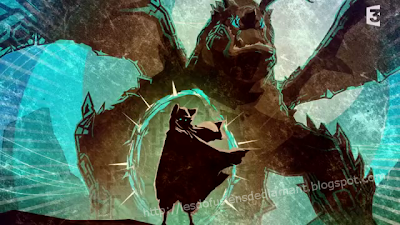


Arcane Traditions
Prismic Magic
Although 'prismic' often refers to light manipulating magics, wizards of the school of prismic magic understand it's true reference and functioning : they study the weave to use it as a magical prism, which lets them reshape their spells through decomposition and recomposition of studied magical composites. This school requires intense study, advanced understanding of the arcane, as well as a very flexible and resilient mind.
Concentration Savant
Beginning at 2nd level, the gold and time you must spend to copy a spell that requires concentration into your spellbook is halved and You have advantage on Constitution saving throws made to maintain concentration on a spell.
Spell Morphing
Starting at 2nd level, you can perform prismic operations on your spells allowing you to slightly change their nature. Whenever you deal slashing, piercing, bludgeoning, acid, poison, fire, cold, radiant, necrotic, thunder or lightning damage with a spell, you can use this feature to change the spell's damage type to another one of those listed above.
Prismic Alteration
At 6th level, your affinity with magical processes grants enhanced modularity to your spells. You can use this feature as an action while you are concentrating on a spell. You choose another concentration spell you know that is of a level equals to or lower than the one you are concentrating on.
The spell you are concentrating on ends as you start to concentrate on the spell you chose. If the spell you choose targets one or many creatures, you can only target creatures that were subjected to the previous spell's effects as you used this feature; If it targets an area, it originates from a point you choose within the previous spell's area of effect or from a target that was subjected to it's effects.
You ignore the range of the chosen spell, but any other limitations still apply. When a creature that was subjected to the previous spell's effect is targeted by the spell you chose when using this feature, it is automatically subjected to it's effects.
You can use this feature 2 times. This scales with your Wizard level, becoming 3 at 10th level. You regain all expended uses when you complete a long rest.
Durable Magic
Beginning at 10th level, the magic you channel helps ward off harm. While you maintain concentration on a spell, you have a +2 bonus to AC and all saving throws.
Advanced Prismic Alteration
Starting at 14th level, you harness prismic magic processes with ease. You now regain expended uses of your Prismatic Alteration on a short or long rest.
PART III
Creatures & Magic Items
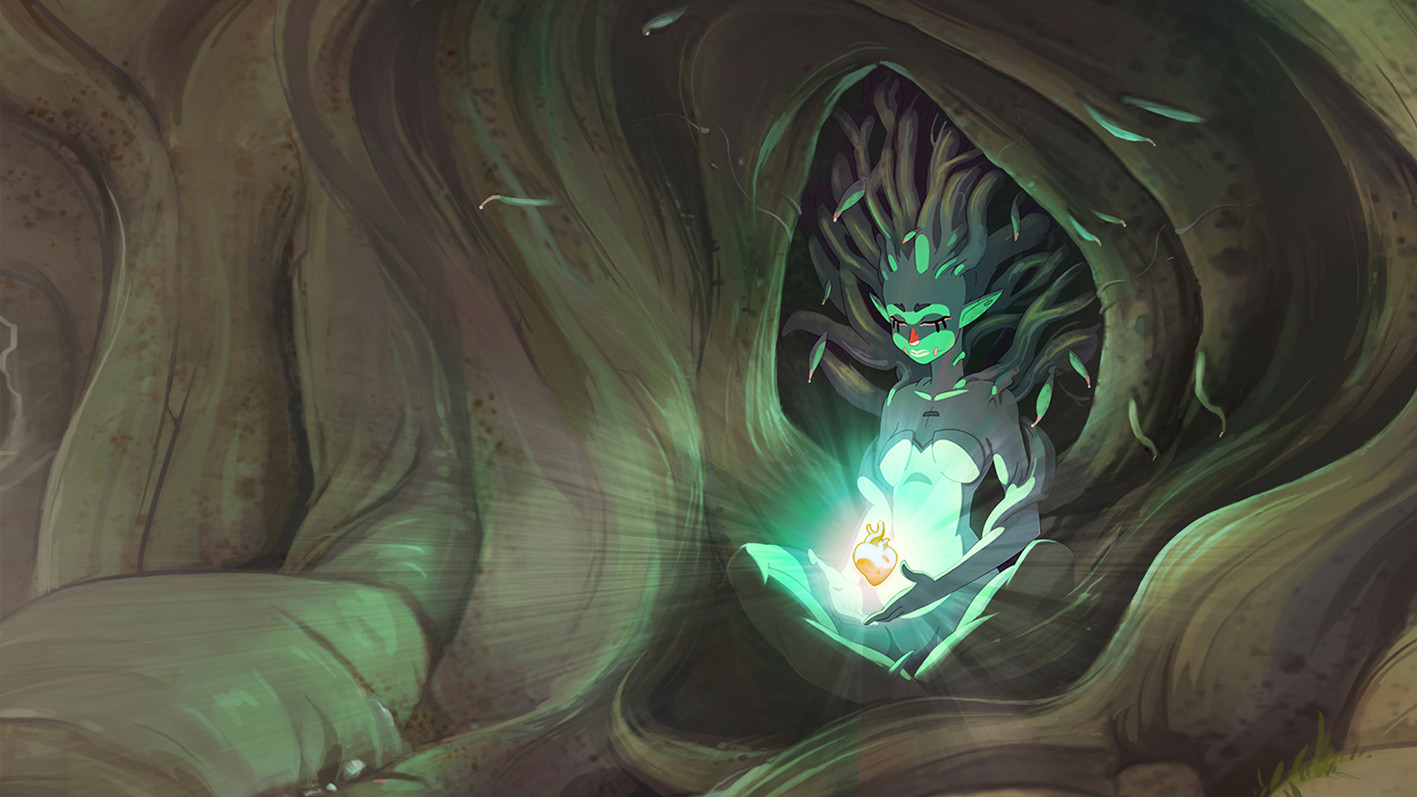
Monstruous Families
Drhellers
Baby Drheller
Small beast, unaligned
- Armor Class 13
- Hit Points 32 (7d4 + 14)
- Speed 20 ft., burrow 30 ft.
STR DEX CON INT WIS CHA 13 (+1) 10 (+0) 15 (+2) 7 (-2) 11 (+0) 7 (-2)
- Saving Throws CON + 4
- Skills Athletics +3, Investigation +0, Perception +2
- Damage Resistances poison
- Senses tremorsense 30 ft. (blind beyond this radius), passive perception 12
- Challenge 1/4 (50 XP)
Keen Smell. The drheller has advantage on Wisdom (Perception) checks that rely on smell.
Digging Tactics. While burrowing, the drheller can expend 15 feet of movement to weaken the ground in the surface area it moves through. A creature that enters the area for the first time or starts its turn in the area must succeed on a DC 13 Dexterity saving throw or be prone and restrained into the ruble formed by the collapsing ground. It can attempt to escape as an action on it's turn with a successful DC 13 Strength check to no longer be restrained.
Actions
Claws. Melee Weapon Attack: +3 to hit, reach 5 ft., one target. Hit: 6 (2d4 + 1) slashing damage.
Young Drheller
Medium beast, unaligned
- Armor Class 14 (natural armor)
- Hit Points 45 (6d8 + 18)
- Speed 30 ft., burrow 40 ft.
STR DEX CON INT WIS CHA 15 (+2) 10 (+0) 17 (+3) 8 (-1) 13 (+1) 7 (-2)
- Saving Throws CON + 5
- Skills Athletics +4, Investigation +1, Perception +3
- Damage Resistances poison
- Senses tremorsense 45 ft. (blind beyond this radius), passive perception 13
- Challenge 1/2 (100 XP)
Keen Smell. The drheller has advantage on Wisdom (Perception) checks that rely on smell.
Sensitive Tremorsense. As a bonus action, the Drheller can perceive through blindsight the aspects of it's surroundings that are in range of it's tremorsense until the start of it's next turn, such as terrain, objects and creatures that are in contact with the same ground or substance as the Drheller, as well as any creatures or objects in contact with a perceived aspect.
Digging Tactics. While burrowing, the drheller can expend 15 feet of movement to weaken the ground in the surface area it moves through. A creature that enters the area for the first time or starts its turn in the area must succeed on a DC 14 Dexterity saving throw or be prone and restrained into the ruble formed by the collapsing ground. It can attempt to escape as an action on it's turn with a successful DC 14 Strength check to no longer be restrained.
Actions
Multiattack. The drheller makes two attacks: one with its tusks and one with its claws.
Tusks. Melee Weapon Attack: +4 to hit, reach 5 ft., one target. Hit: 6 (1d6 + 2) bludgeoning damage.
Claws. Melee Weapon Attack: +4 to hit, reach 5 ft., one target. Hit: 7 (2d4 + 2) slashing damage.
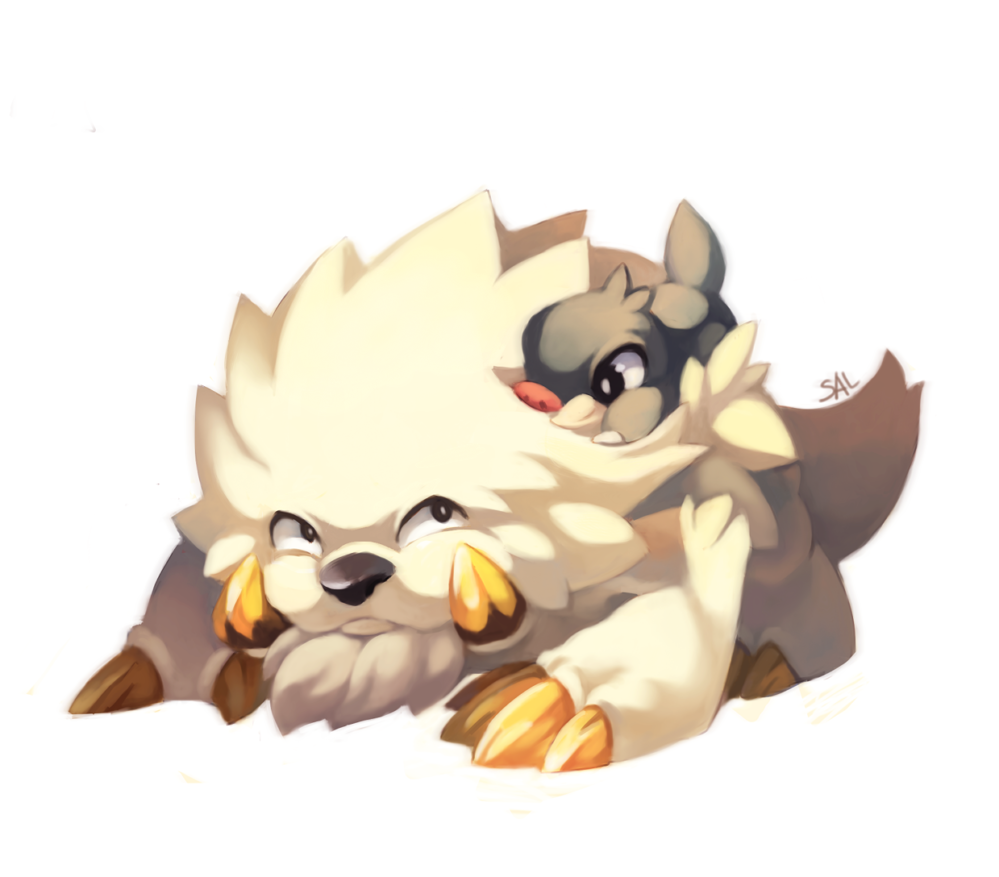
Drheller
Large beast, unaligned
- Armor Class 14 (natural armor)
- Hit Points 68 (8d10 +24)
- Speed 30 ft., burrow 60 ft.
STR DEX CON INT WIS CHA 15 (+2) 10 (+0) 17 (+3) 10 (+0) 13 (+1) 7 (-2)
- Saving Throws CON +6
- Skills Athletics +5, Investigation +3, Perception +4
- Damage Resistances poison
- Senses tremorsense 60 ft. (blind beyond this radius), passive perception 14
- Challenge 1 (200 XP)
Keen Smell. The drheller has advantage on Wisdom (Perception) checks that rely on smell.
Sensitive Tremorsense. As a bonus action, the Drheller can perceive through blindsight the aspects of it's surroundings that are in range of it's tremorsense until the start of it's next turn, such as terrain, objects and creatures that are in contact with the same ground or substance as the Drheller, as well as any creatures or objects in contact with a perceived aspect.
Digging Tactics. While burrowing, the drheller can expend 15 feet of movement to weaken the ground in the surface area it moves through. A creature that enters the area for the first time or starts its turn in the area must succeed on a DC 15 Dexterity saving throw or be prone and restrained into the ruble formed by the collapsing ground. It can attempt to escape as an action on it's turn with a successful DC 15 Strength check to no longer be restrained.
Actions
Multiattack. The drheller makes two attacks: one with its tusks and one with its claws.
Tusks. Melee Weapon Attack: +5 to hit, reach 5 ft., one target. Hit: 6 (1d6 +2) bludgeoning damage.
Claws. Melee Weapon Attack: +5 to hit, reach 5 ft., one target. Hit: 7 (2d4 +2) slashing damage.
Earth Shaping. The Drheller can choose a portion of terrain, dirt or stone within 20 feet of it, that fits in an area no larger than 20 feet on a side. It can manipulate or reshape dirt, sand, stone or clay in the area in any manner it chooses; It can raise or lower the area's elevation, create or fill in a trench or tunnel, erect or flatten a wall, or form a pillar for example. The extent of any such changes can't exceed half the area's largest dimension. It can also turn the targeted area into difficult or normal terrain. Creatures in the area can't usually be trapped or injured by these slow changes.
Elder Drheller
Large beast, unaligned
- Armor Class 15 (natural armor)
- Hit Points 124 (13d10 +52)
- Speed 30 ft., burrow 60 ft.
STR DEX CON INT WIS CHA 16 (+3) 10 (+0) 18 (+4) 10 (+0) 15 (+2) 7 (-2)
- Saving Throws STR +6, CON + 7
- Skills Athletics +6, Investigation +3, Perception +5
- Damage Resistances poison
- Senses tremorsense 120 ft. (blind beyond this radius), passive perception 15
- Challenge 4 (1,100 XP)
Keen Smell. The drheller has advantage on Wisdom (Perception) checks that rely on smell.
Sensitive Tremorsense. As a bonus action, the Drheller can perceive through blindsight the aspects of it's surroundings that are in range of it's tremorsense until the start of it's next turn, such as terrain, objects and creatures that are in contact with the same ground or substance as the Drheller, as well as any creatures or objects in contact with a perceived aspect.
Digging Tactics. While burrowing, the drheller can expend 15 feet of movement to weaken the ground in the surface area it moves through. A creature that enters the area for the first time or starts its turn in the area must succeed on a DC 16 Dexterity saving throw or take 3d6 bludgeoning damage, be knocked prone become restrained into the ruble formed by the collapsing ground. It can attempt to escape as an action on it's turn with a successful DC 16 Strength check to no longer be restrained.
Actions
Multiattack. The drheller makes two attacks: one with its tusks and one with its claws.
Tusks. Melee Weapon Attack: +6 to hit, reach 5 ft., one target. Hit: 8 (1d8 +3) bludgeoning damage.
Claws. Melee Weapon Attack: +6 to hit, reach 5 ft., one target. Hit: 10 (2d6 +3) slashing damage.
Earth Shaping. The Drheller can choose a portion of terrain, dirt or stone within 20 feet of it, that fits in an area no larger than 20 feet on a side. It can manipulate or reshape dirt, sand, stone or clay in the area in any manner it chooses; It can raise or lower the area's elevation, create or fill in a trench or tunnel, erect or flatten a wall, or form a pillar for example. The extent of any such changes can't exceed half the area's largest dimension. It can also turn the targeted area into difficult or normal terrain. Creatures in the area can't usually be trapped or injured by these slow changes.
Command Stone (1/day) : The Drheller can cast the wall of stone spell.
Magic Items
Bow of Eladrin Archery
Weapon (longbow) , Rare (requires attunement and proficiency with longbows)

Picture Source: Skyrim Game's Ebony Bow
This ebony, silver lined self mending bow is said to be designed by the Seldarine themselves. It rests in the shape of a delicately decorated bow grip. When activated by it's attuned user, the bow unfolds from it, and a bow string springs into existence from it's tips. Imbued with eladrin magic, any damage this bow suffers is magically repaired over the course of a few seconds.
While you are attuned to this bow, you can activate the bow grip (no action required) to make the full bow grow out of it's ends instantly. This magical bow grants a +1 bonus to attack and damage rolls you make with it.
Eladrin Shot
Starting at 5th level, while attuned to this bow, whenever you fire an arrow from this bow as part of the Attack action, you can apply a random arcane shot from the Arcane Archer's Arcane Shot options to the arrow. You choose to use this ability when it hits, unless the Arcane shot doesn't require an attack roll.
If an option requires a saving throw, your Arcane Shot save DC equals 8 + your proficiency bonus + your Intelligence modifier. You have 1 use of this ability. This becomes 2 when you reach 10th level.
You regain all expended uses of this ability when you finish a short or long rest.
If you are an Arcane Archer, you can choose which of the Arcane Shot option is applied when using this ability. Additionally, you gain a +1 bonus to your Arcane Shot save DC.
More Magical Arrows
Checkout this website for more special arrow ideas!!
Guardian leaf
Wondorous item, rare(requires attunement, druid class)
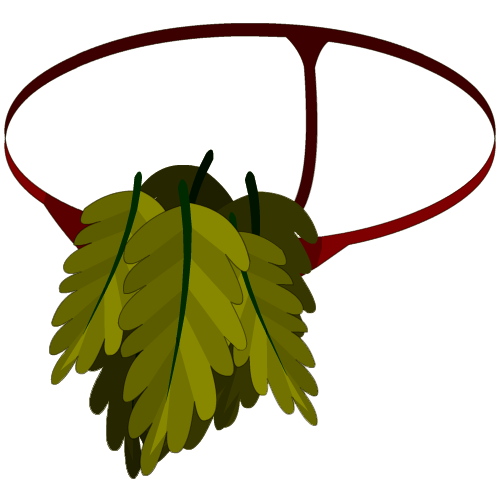
Picture Source: Dofus Fandom
This small belt buckle is covered with a leaf from a legendary oak tree said to live on the divine plane of Arborea.
While attuned to this item, you can expend a use of your Wild Shape to transform into a plant creature with a challenge rating as high as 1. Starting at druid level 6, you can transform into plants with a challenge rating as high as your druid level divided by 3, rounded down.
Additionally, whenever you cast a damaging single target plant based spell, you can choose to give the target a number of temporary hit points equals to half of the spell's damage instead of dealing damage.
Floating Shields
Wondrous item, rare (requires attunement by a cleric and a Wisdom score of at least 15)
This golden encrusted force shield fits in one's hand, but can grow up to a regular shield's size as it's attuned wielder commands it's powers. They are said to be Helms very first shields that he used before being known as the watcher.
While attuned to this item, you can activate it as a bonus action. It grows into a small levitating shield that follows you as you move. As you activate it or as a bonus action while it is activated, you can summon up to two duplicate this shield and assign every shield to a creature within 60 feet of you. A creature gains a +1 bonus to AC and Dexterity saving throws for each shield assigned to it. There cannot be more than 3 active shields at a time.
A creature's shields teleports back to you if it goes beyond range.
Astral Dragon's Planar Beacon
Wondrous item, Very rare (requires attunement and relationship with an astral dragon)
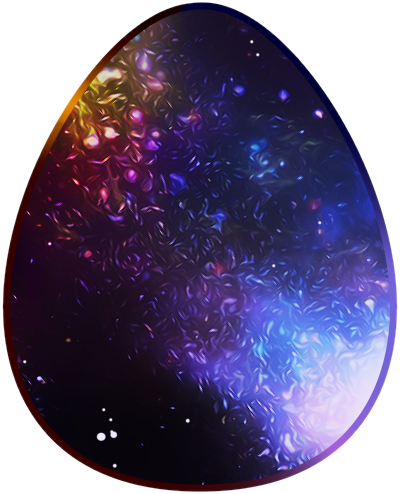
Picture Source: Planet-Spatulon's galaxy egg (DevianArt)
An astral dragon has grown comfortable enough with your existence to grant you the ability to settle into it's beloved astral sea. It created and lets you shape a small demiplane within th astral sea to use as a dimensional beacon; which you can access by focusing on this piece of the astral dragon's eggshell. With it, you can potentially travel the planes like this majestic creature, and potentially meet it in your beloved astral beacon.
You can use this item by focusing for a minute (as if concentrating on a spell), after which a portal opens in the nearest unoccupied space. The portal remains open for 1 minute or until you close it (no action required). It can be up to 30 feet in diameter and leads to your planar beacon, within the astral sea.
Your planar beacon takes the shape of a 40-foot radius sphere of star filled, misty and colorful void. This demiplane mimics the astral sea, granting it particular rules:
Timeless space. As time almost doesn't affect things on that plane, creatures here don't need food nor air, don't age and can't heal nor die.
Realm of thought and imagination. This plane is tied to your thoughts and imagination. You can shape the plane with your mere thoughts, modifying it's gravitational direction, it's landscape's appearance and creating or modifying structures and inorganic materials to compose the demiplane, although such creations must fit in 20-foot radius spheres and can only exist as long as they remain on this demiplane. The modifications occur too slowly to trap creatures or cause harmful effects.
Speed of mind. Creatures on this demiplane have a flying speed equals to five times their intelligence score.
Cosmological shift. When you are on this demiplane, you can instantly open a portal to a teleportation circle or another location you know on any plane of existence.
Xenophobic The demiplane naturally reacts to intruders. If an unwilling or unwanted creature stays in this demiplane, it can attempt to exit through portals you open that are linked to the demiplane or through magical means. If it remains, it is banished to it's home plane after 48 hours.
Once you use this object, you can't use it again until you finish a long rest.
Barrel of Everthirst
Wondrous item , rare (requires attunement by a monk)
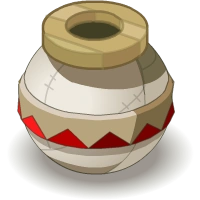
Picture Source: Dofus Wikia
The Barrel of Everthirst is a small barrel that can hold up to 35 gallons of liquid inside. It uses simple transmutation and moderately advanced conjuration magical concepts to allow it's attuned user to magically manipulate it's contents.
While attuned to the barrel, it feels light to you even while filled. It instantly generates liquid so that it always contains at least 5 gallons. You can change the liquid it generates at will, choosing water or the last alcoholic, non poisonous, non magical liquid that was poured into it. Liquids that already carry magical properties are not affected by this barrel’s enchantment.
Your attunement lets you manipulate the barrel's liquid with your ki. You gain access to the following abilities.
-
Shape Drink : You can manipulate the barrel's contents as per the shape water cantrip.
-
Spill/Absorb (2 ki points) : You cast create/destroy water centered on the barrel as a bonus action. The only container you can target is the Barrel of Everthirst, and you can choose to create the barrel's designated liquid instead of water.
-
Puff (2 ki points) : You cast the fog cloud spell centered on the barrel.
-
Barrel Breath (3 ki points) : As an action, you take a sip from the barrel and use the consumed beverage and your ki to infuse your breath with elemental power. Each creature in a 15-foot cone must make a Dexterity saving throw against your Ki save DC. A creature takes 4d6 fire or cold damage (your choice) on a failed save, or half as much damage on a successful one.
-
Wave (4 ki points) : You cast the wall of water spell on a point within 15 feet of the barrel, using the barrel's content as a material component. The wall can be made of water or the barrel's designated liquid. If the chosen liquid allows it, the spell's effects on fire and cold damage are maintained.
PART IV
Credits
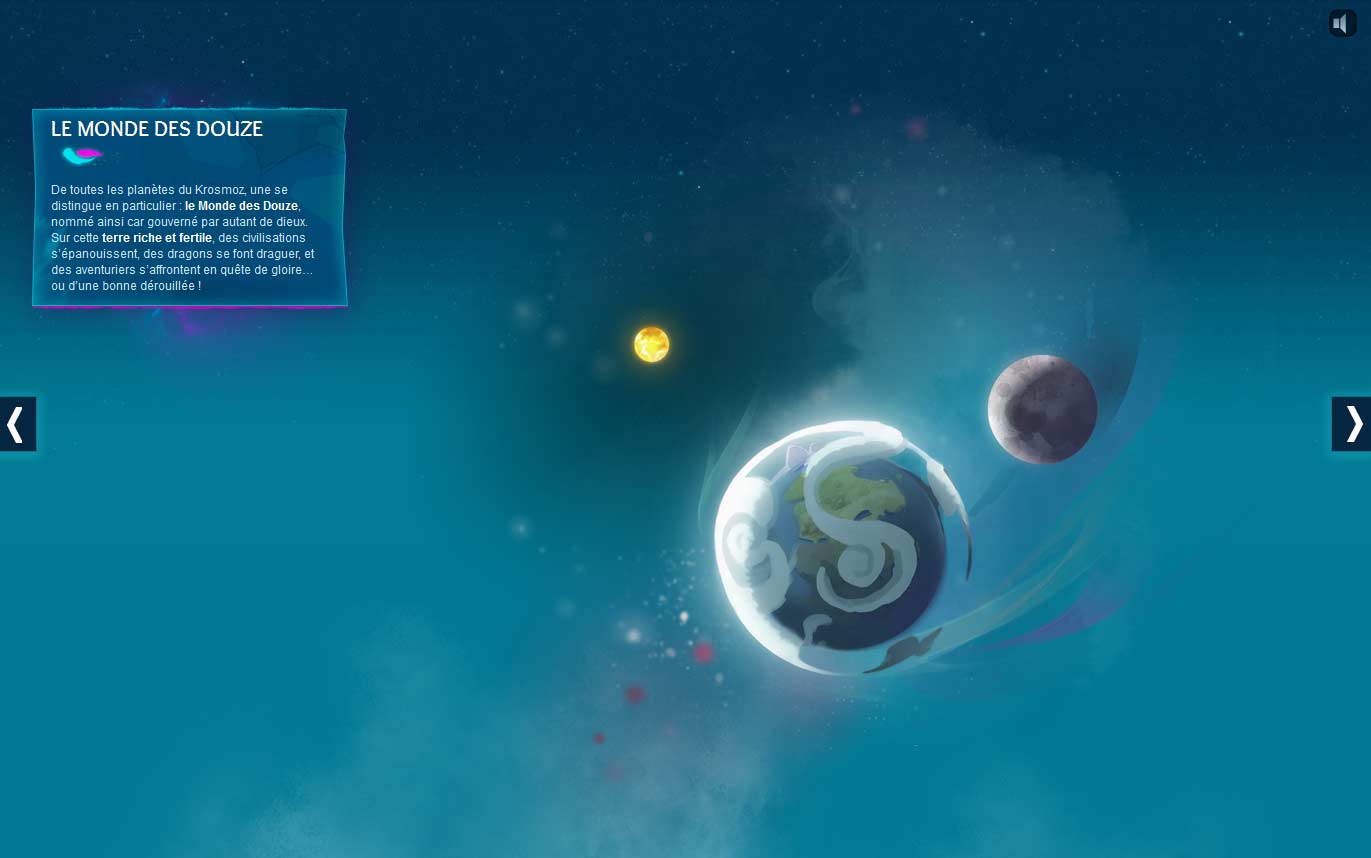
Art Credit :
-
Wakfu Class Insignas
-
Krosmaga God Icons
-
Waksu Season 3 by Fabrice Nzinzi on Artstation
-
Wakfu Mag Cover 1 by Gray Shuco on ArtStation
-
Gamakna 20 October 2017 (Ankama)
-
Dofus 2.0 by Xa-xa-xa on DeviantArt
-
Nekotawawa's character design for Fate/Grand Order. (found here)
-
Neri on DeviantArt
-
Kim Ettinoff on Tumblr and DeviantArt
-
Sylveyn on DevianArt
-
Zimra-art on DeviantArt
-
Maskemane Comic Art by Takeshi Jonoo, found here
-
Jaron Zheng (found here)
-
Z-Crackers on DeviantArt
-
Riftryu on DeviantArt
-
Les Dofusiens de Diamant (found here)
-
Dofus Game Huppermage Character Designs
-
Salanchu on Tumblr
-
Krozmoz Website (found here)
Reddit posts:
Subclasses
Arcane Traditions
Divine Domains
Druid Circles
- Circle of the Roots (Initial posts)
Martial Archetype
Monastic Traditions
Otherworldly Patrons
Primal Paths
- Path of the Bloodmarked (Initial posts)
Roguish Archetypes
Sorcerous Origins
- Time Sorcery (Initial post)